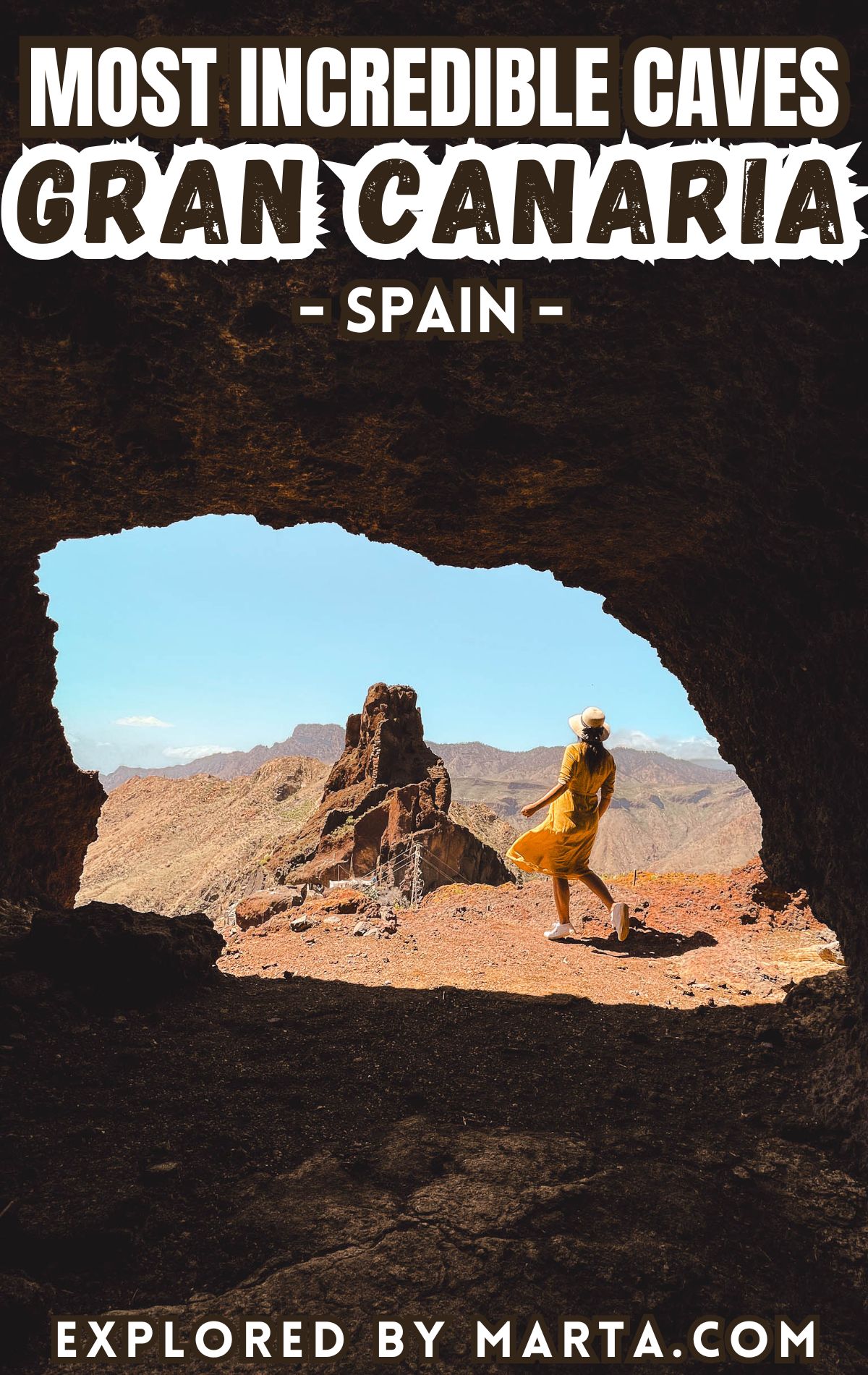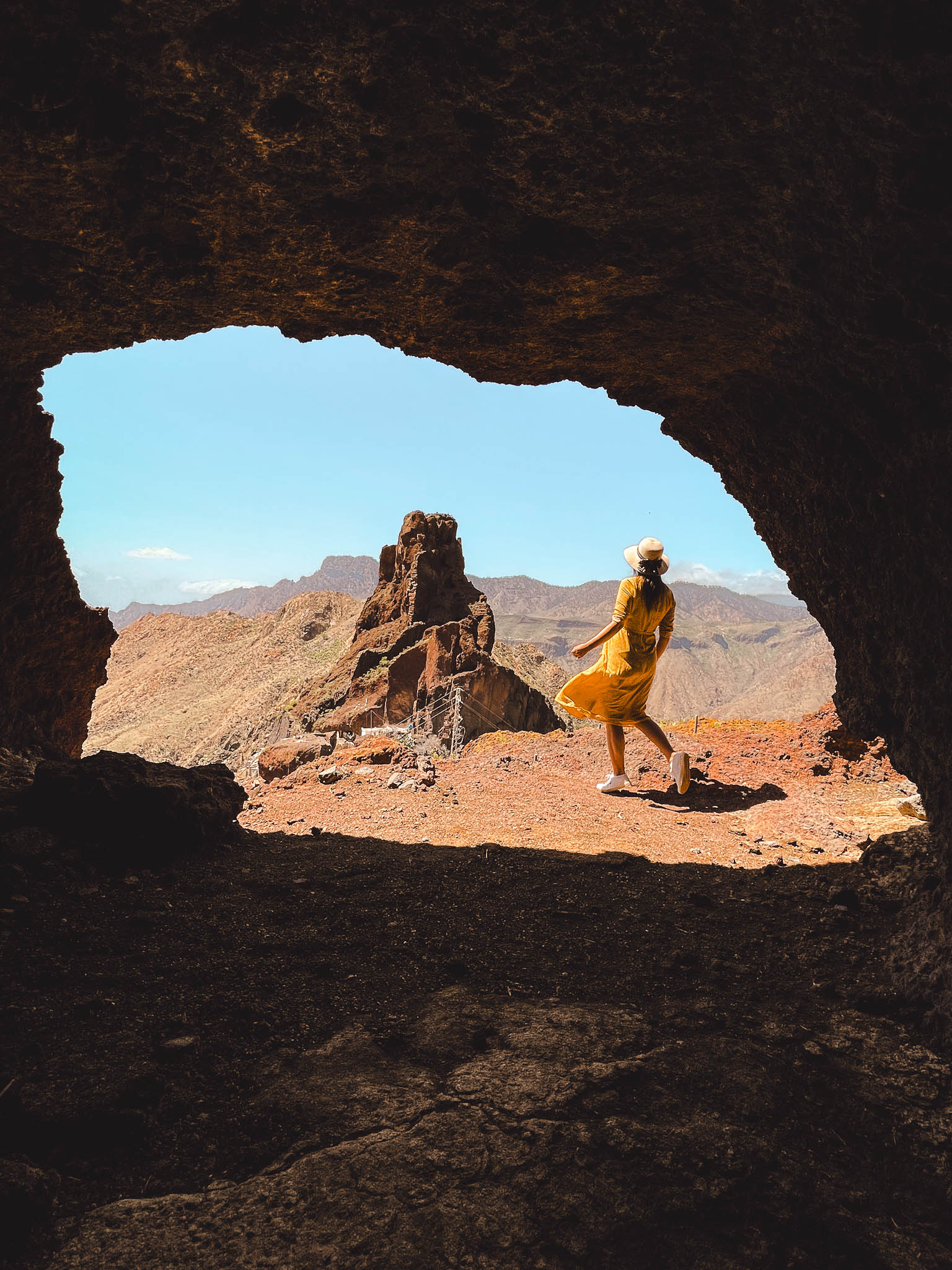Hidden wonders: 10 incredible caves in Gran Canaria, Spain
This post may contain affiliate links. If you use these links to buy something I may earn a small commission at no extra cost to you! Thank you for your support!
Are you ready to explore the most incredible caves in Gran Canaria, Spain—the land of ancient cave dwellers? We spent over three months in Gran Canaria, and exploring its unique caves was one of my favorite things to do there!
Before the Spanish conquered the island in the 15th century, Gran Canaria was inhabited by thousands of indigenous people known as the Guanches, who had lived on the island for around 2,000 years. They were primarily cave dwellers.
To be honest, there are too many caves to count in Gran Canaria, and not all of them are worth visiting. In this article, you’ll find the most unique and interesting caves in Gran Canaria, all with descriptions, photos, and Google Maps locations. Happy travels!
1. Caves of Valeron / Cenobio de Valerón
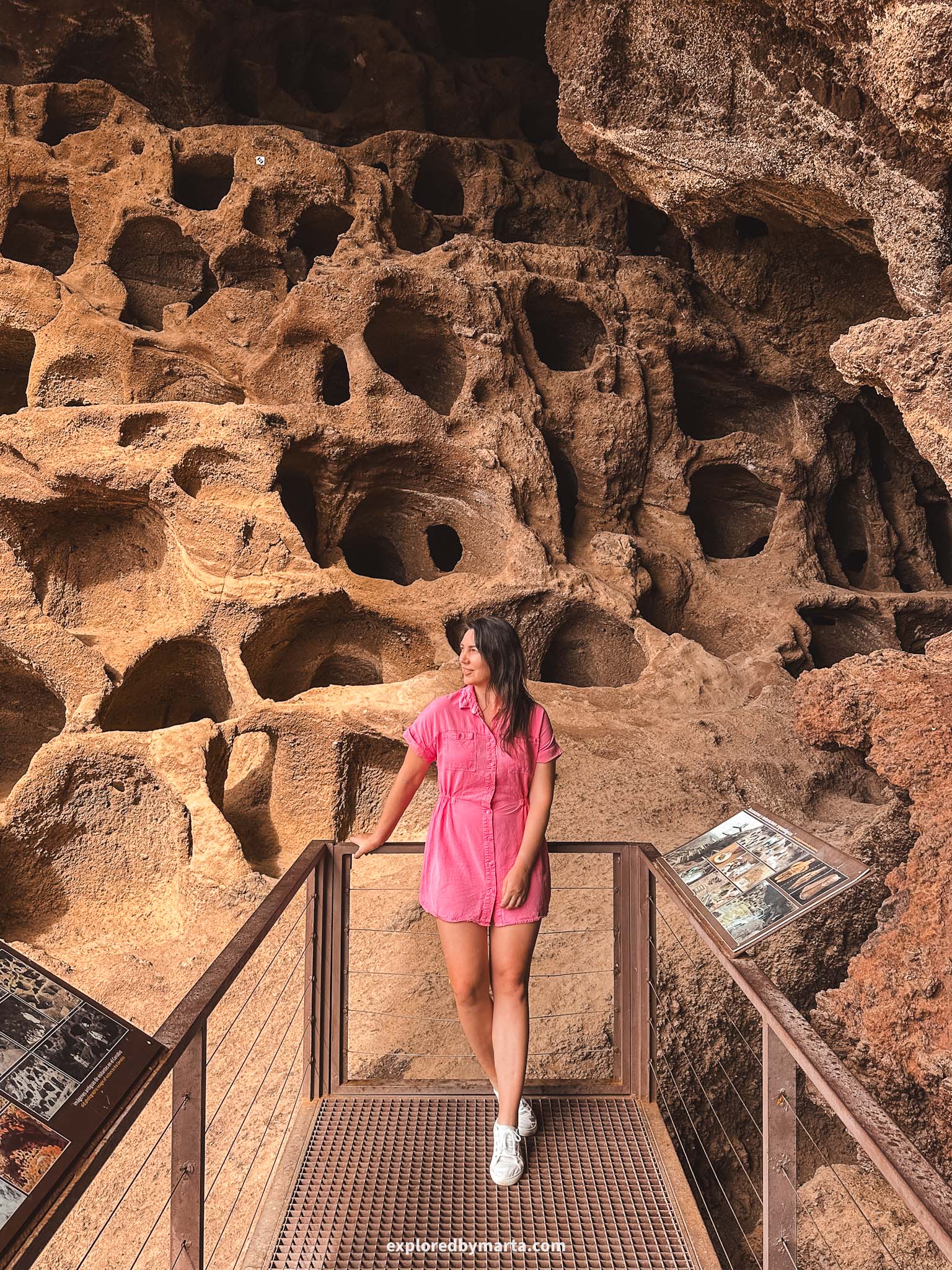
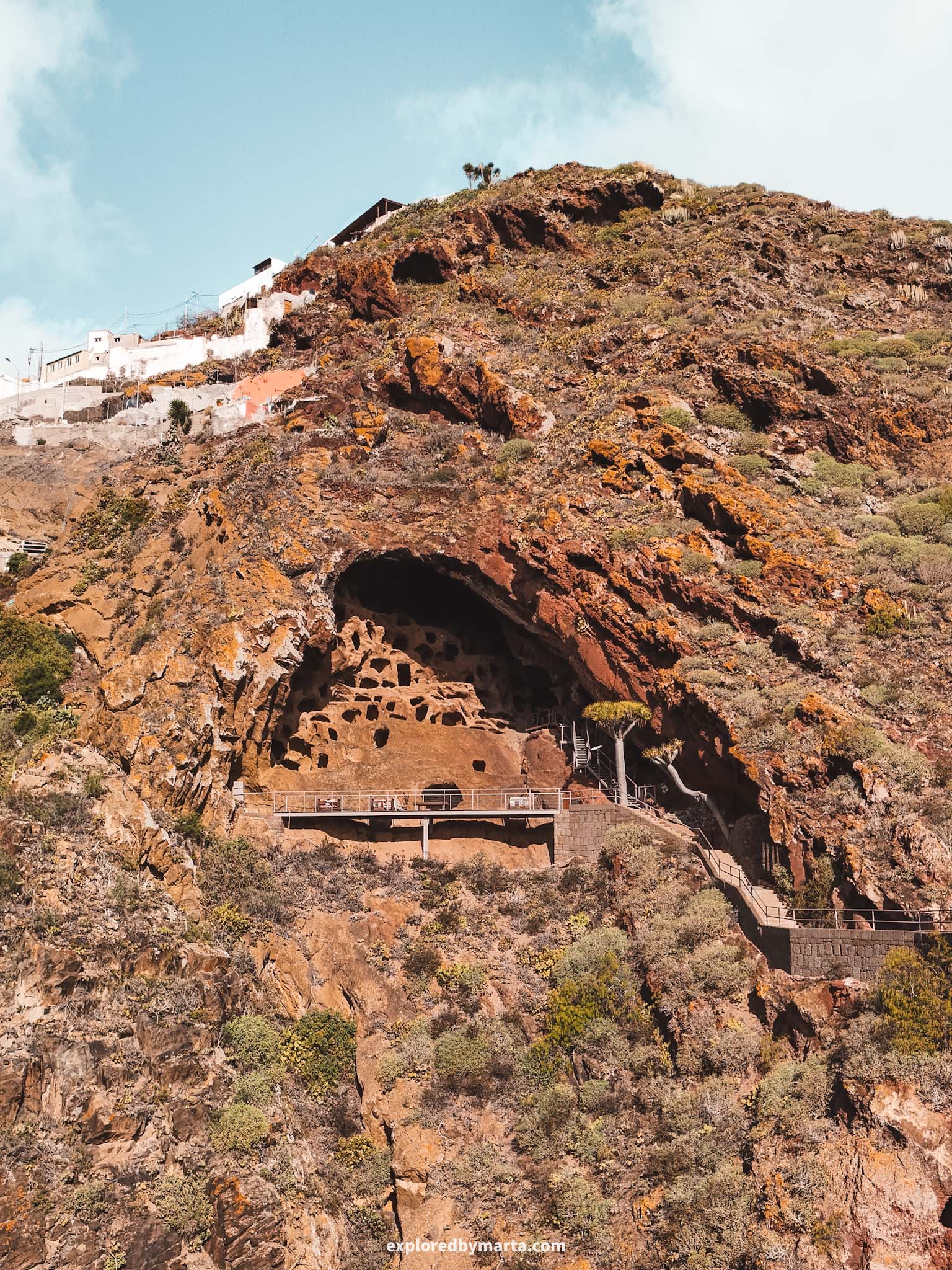
Caves of Valeron or Cenobio de Valerón is a complex of caves carved into the rock in the Northern part of Gran Canaria. It was used as a communal storage place for goods and tools for the indigenous Canarian people.
Today, these are among the most-visited caves in Gran Canaria, attracting tourists eager to explore how the Guanches lived during the pre-Hispanic era. The Valerón caves date back around 800 years and include more than 350 chambers in this cave complex.
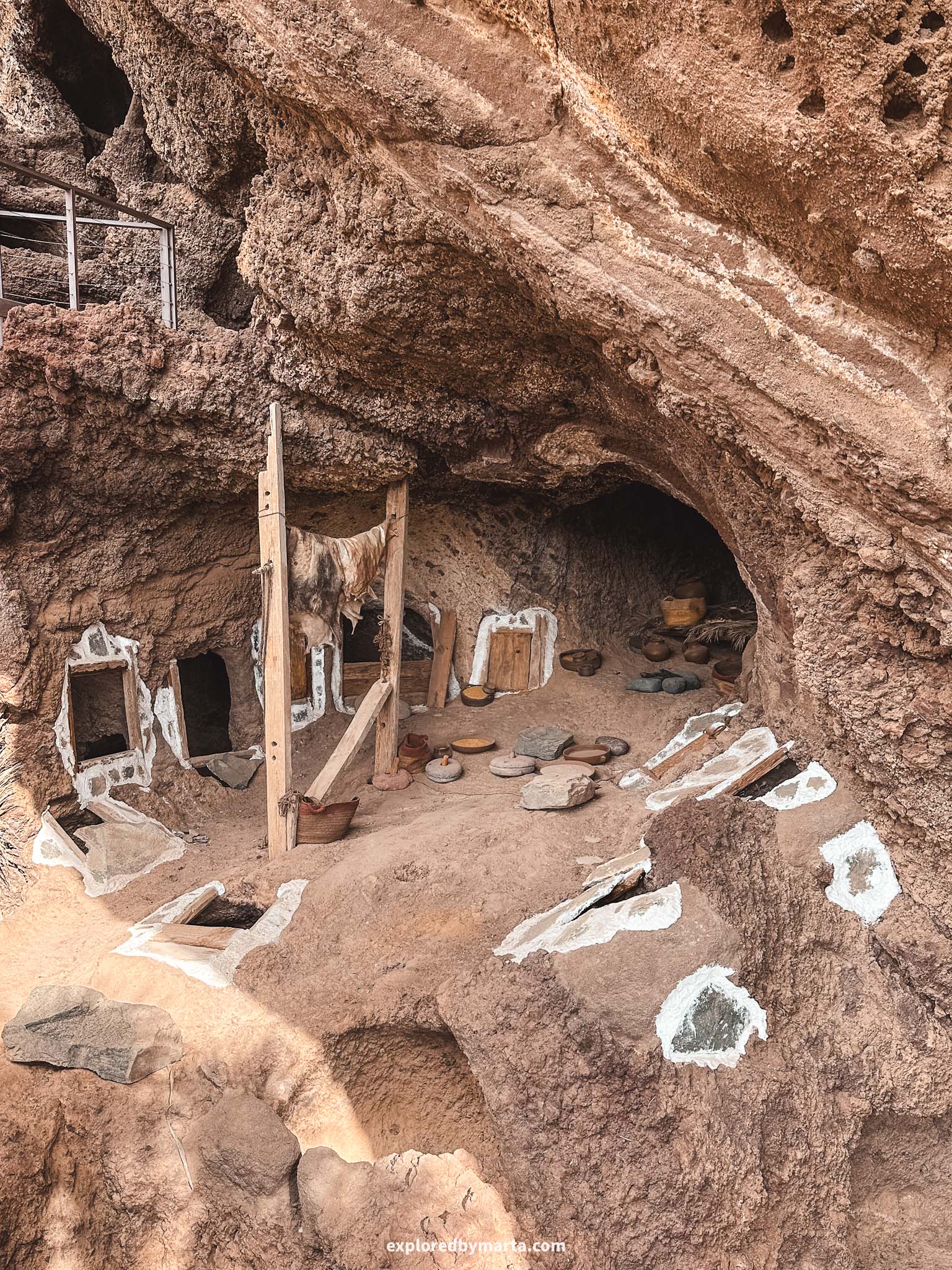
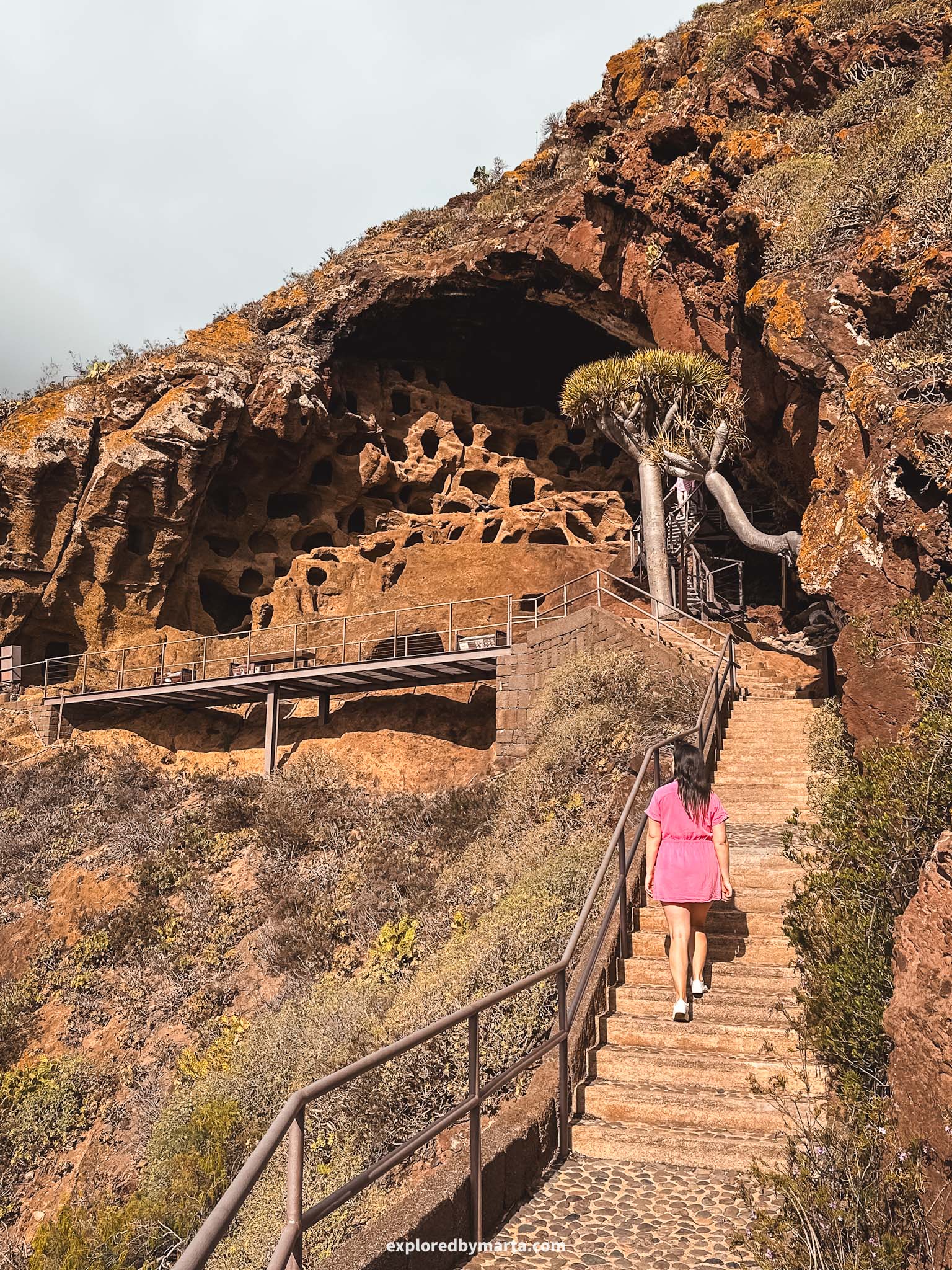
Cenobio de Valerón is perched on a cliffside next to a quiet road, offering impressive views of the valley below. It’s a relatively short stop, as there isn’t much else to see but I highly recommend including the Caves of Valerón in your Gran Canaria itinerary.
To reach the caves, drive to the parking lot next to the road (location below), cross the road, and climb a short staircase to the entrance. From a viewing platform, you can see the chambers up close and learn more about them from the information board.
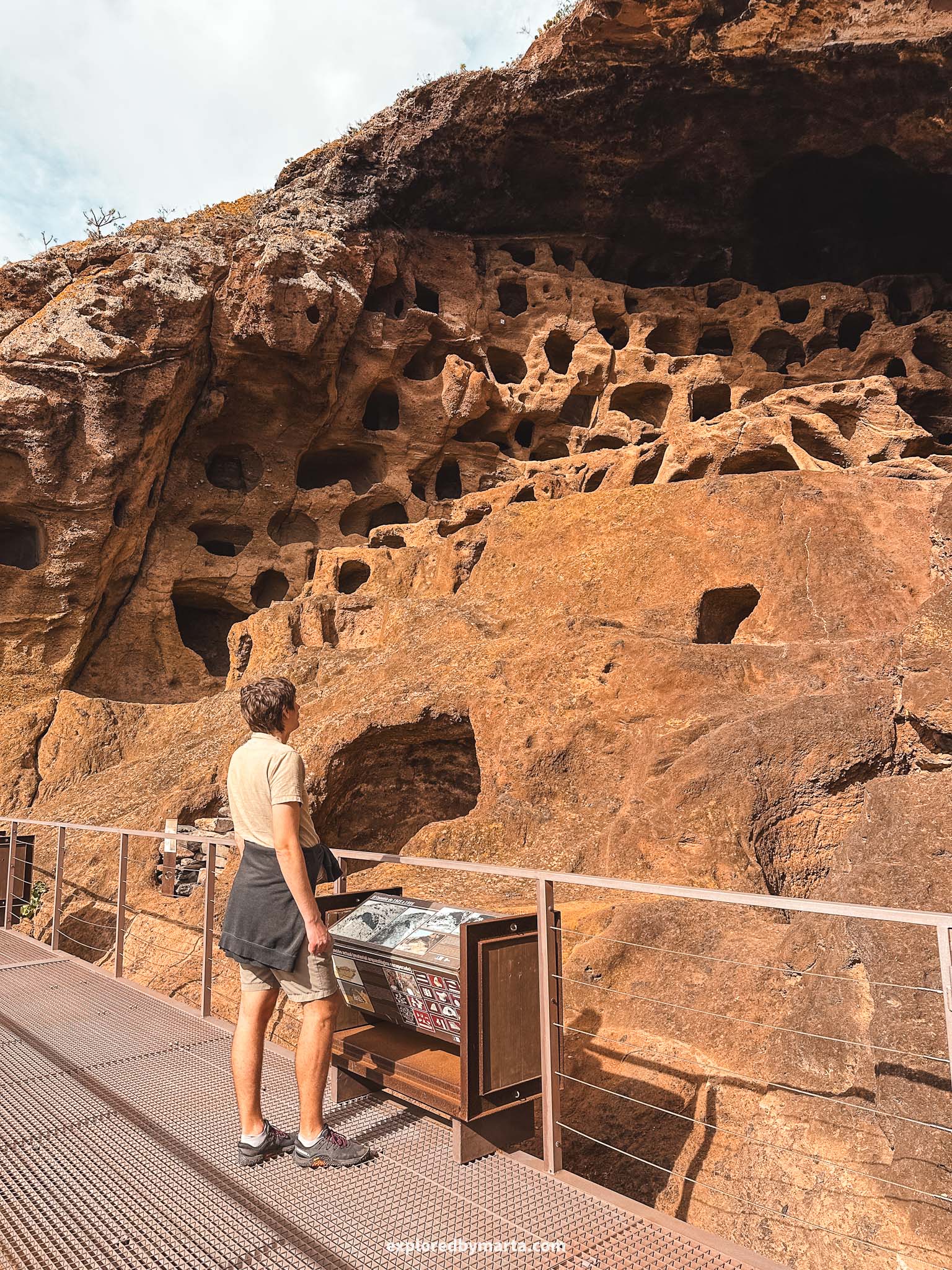
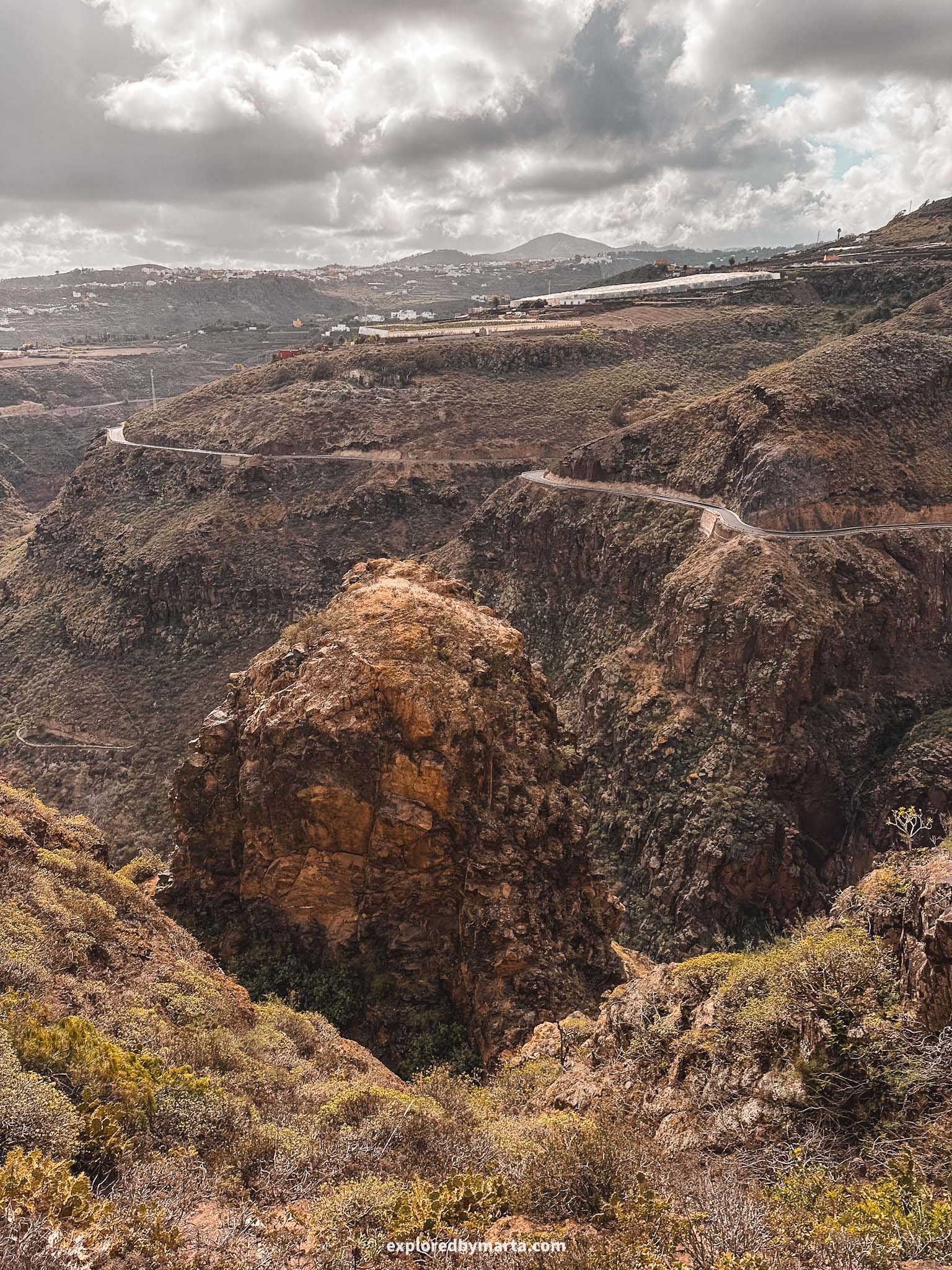
There is also a small aboriginal house along the staircase where you can enter and get a glimpse of how people lived centuries ago. Nothing too impressive but definitely quite interesting.
Overall, it’s a lovely spot, and it’s fascinating to see so many storage caves together! The caves have working hours so make sure to check if they’re open before you come. There is also a small entrance fee which we were able to pay with a card.
Location: Caves of Valeron
2. Cueva Pintada / Painted Cave
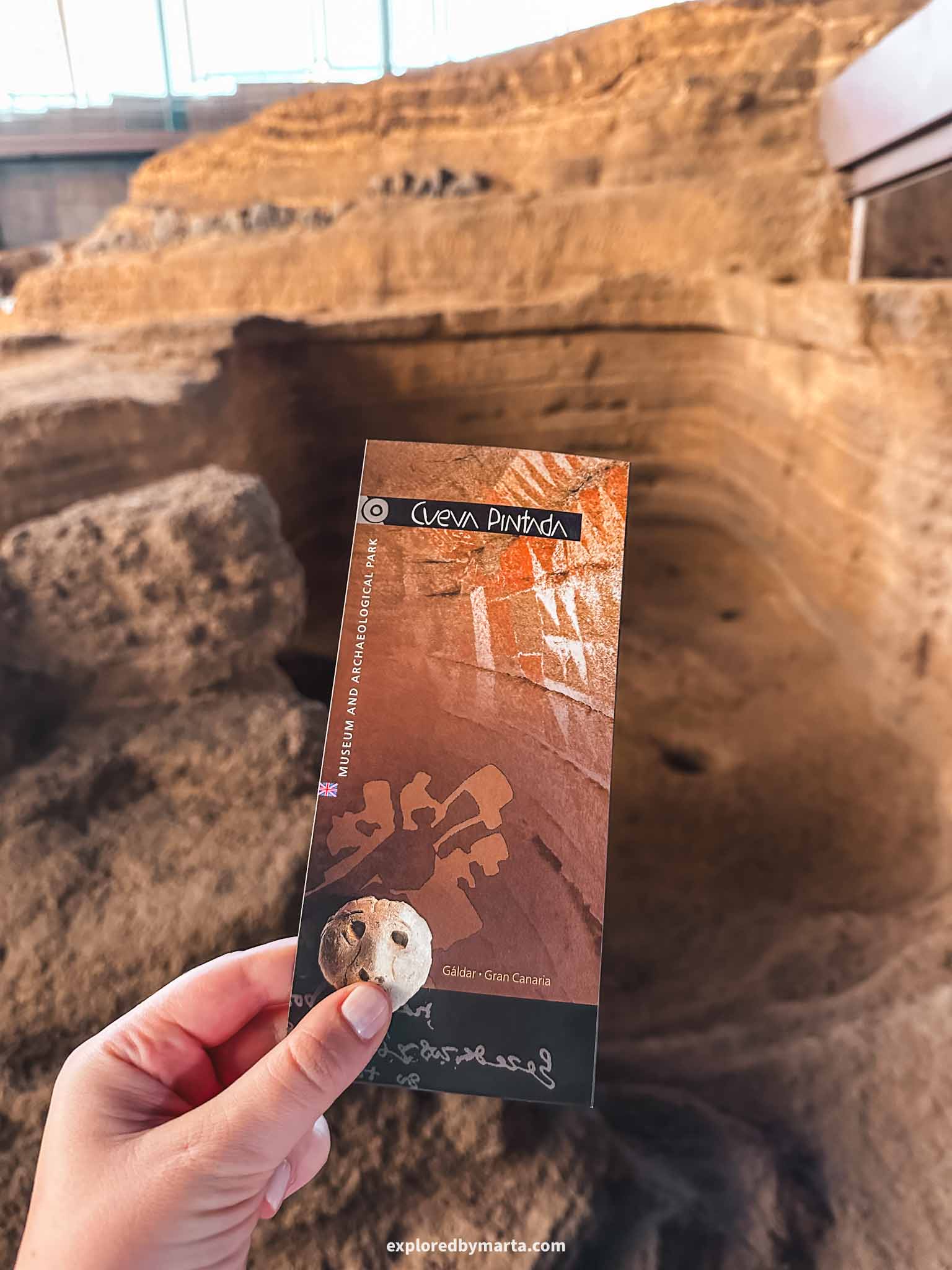
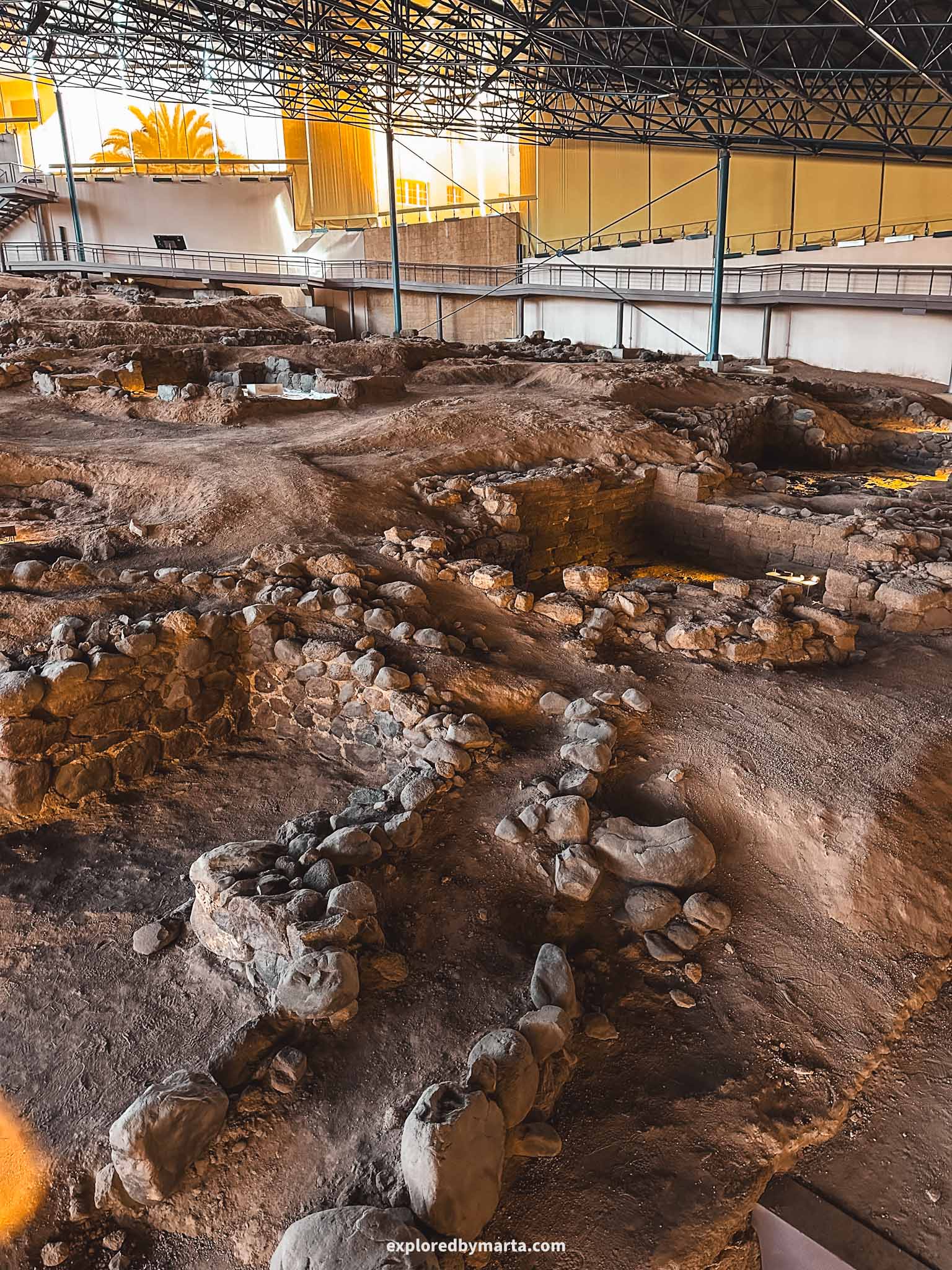
Cueva Pintada is one of the most famous caves in Gran Canaria. Located in Gáldar, the ancient capital of the island, this massive archaeological site is known for its well-preserved geometric paintings inside the cave, left by the island’s ancient inhabitants.
The paintings are believed to be over 1,000 years old. While this might not seem extremely ancient, Cueva Pintada is the only cave on the island where such paintings are still visible, making it a must-visit place in Gran Canaria, especially for history lovers.
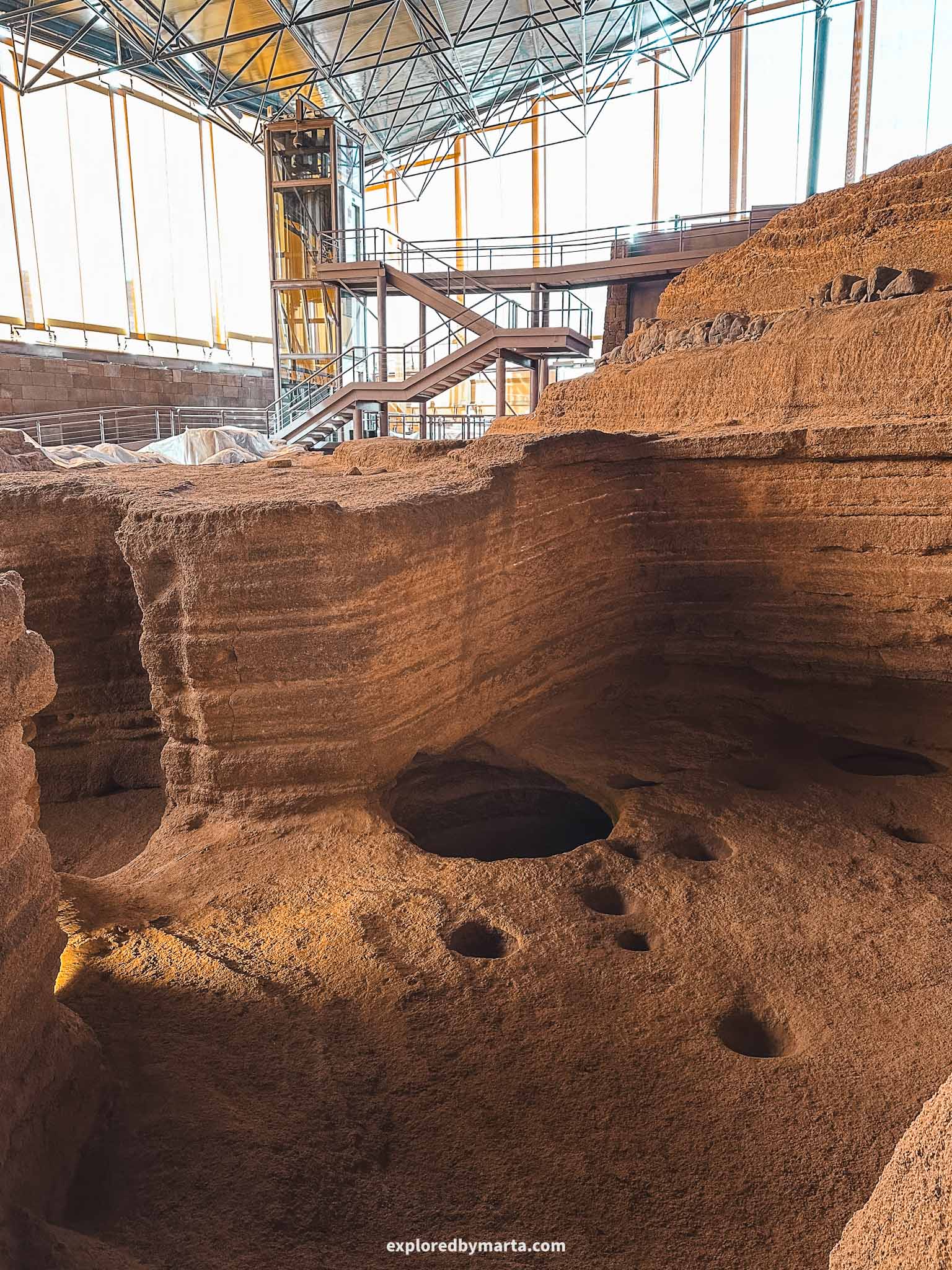

The cave is located inside a museum with an entrance fee and set opening hours. You can visit the site on your own or join one of the scheduled guided tours. We opted for a self-guided visit, where you follow a planned route through the museum.
The planned route includes checking out artifacts from around the island and watching two short films about the Gran Canaria’s history and life of the island’s indigenous inhabitants, the Guanches, and the Spanish conquest.
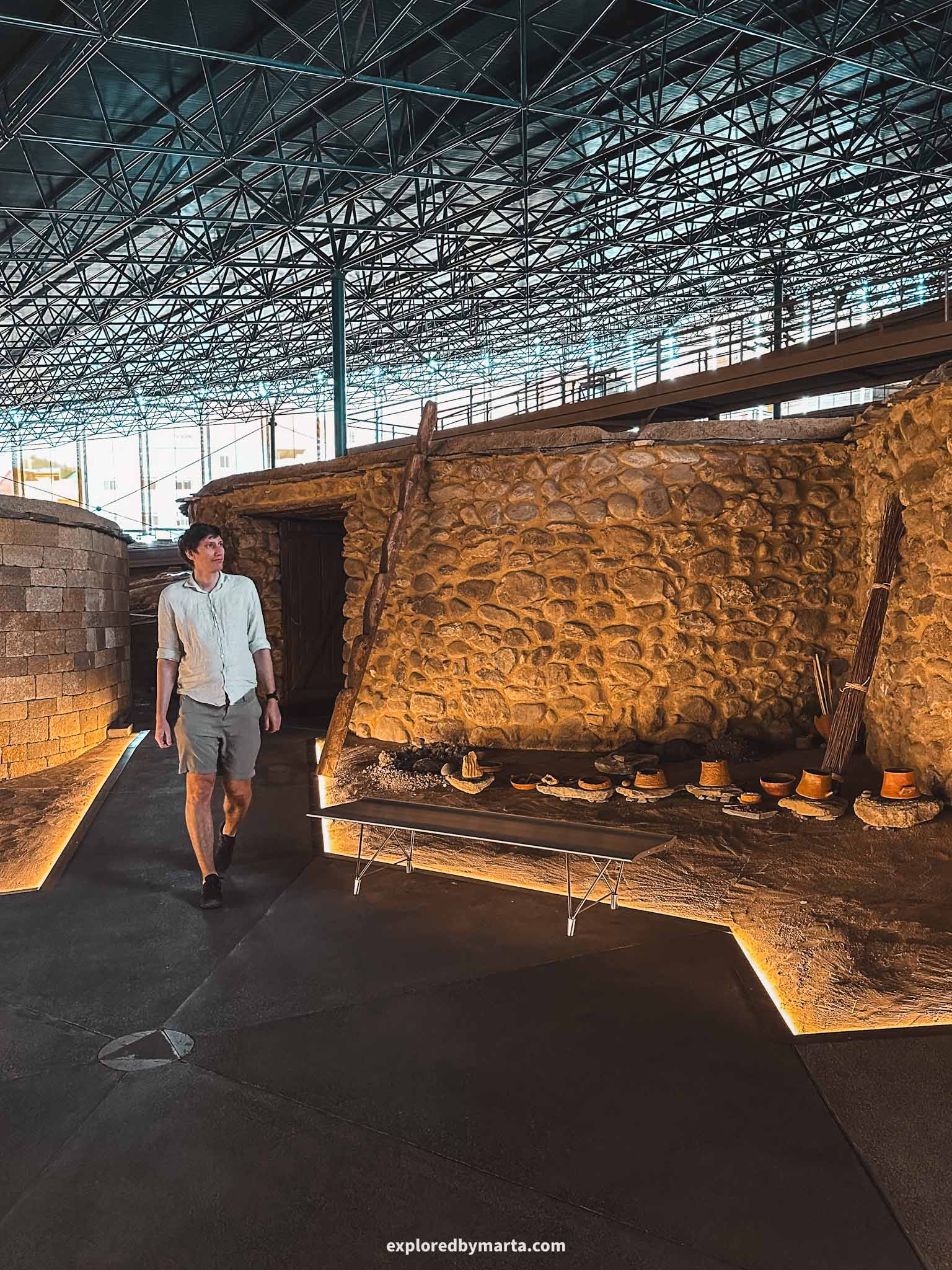

The second part of the visit takes you to the archaeological site. It’s a large, roof-covered area filled with caves, replicas of the homes where the Guanches lived, and, of course, the famous Painted Cave.
To better preserve the cave paintings, the entire cave is housed inside a small shed and protected by a glass wall. You can only enter the shed when invited (they organize visits in smaller groups), and no photos are allowed inside the cave.
Overall, the visit took us about an hour. We arrived right after the museum opened, so there were no lines, and everything went smoothly. However, it can get crowded, especially when tour buses arrive.
Location: Cueva Pintada Museum and Archaeological Park
3. Cueva de Cuatro Puertas
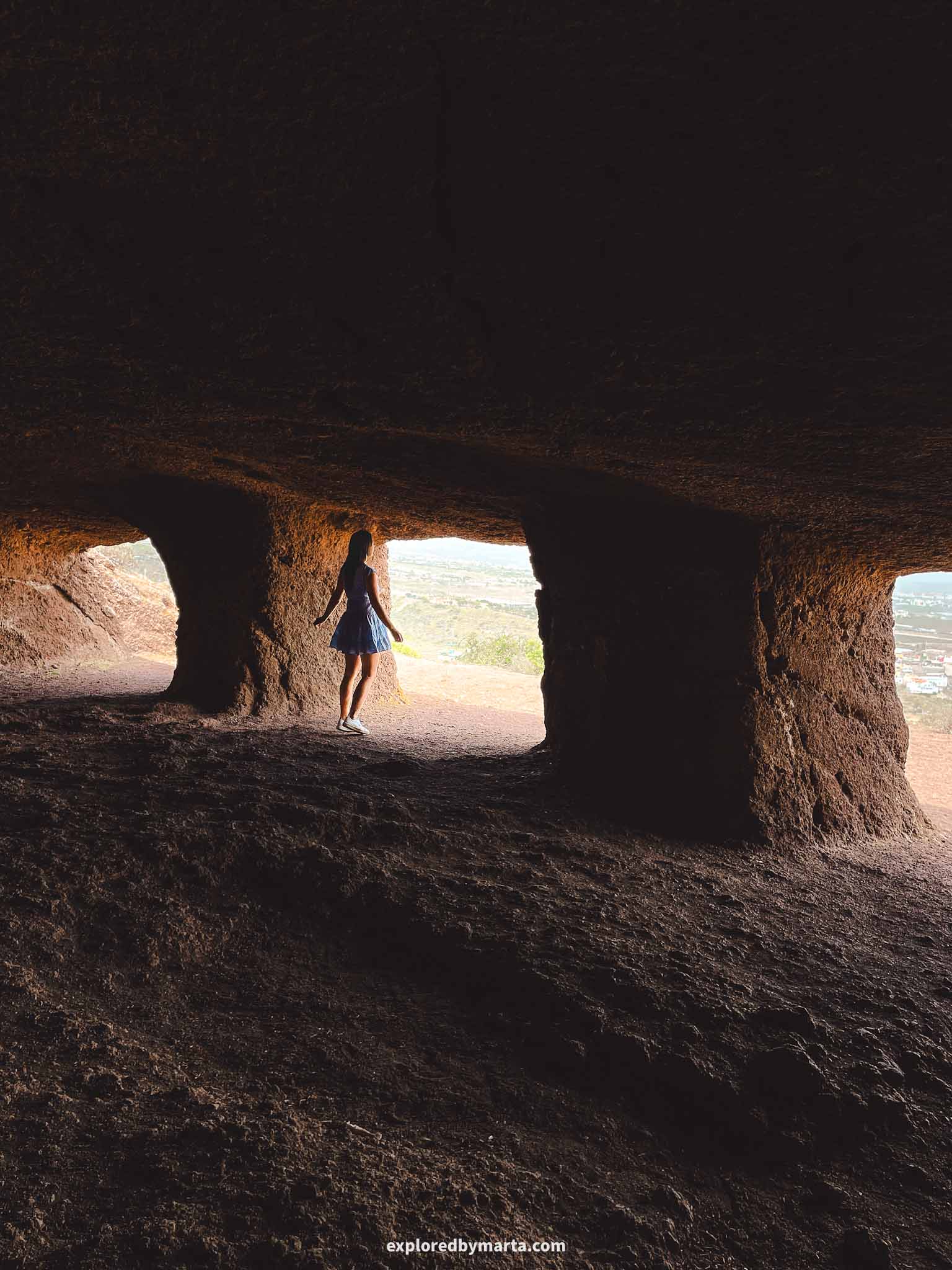
Sitting atop the 315-meter (1,033-foot) Montaña Bermeja hill, Cueva de Cuatro Puertas—also known as the Four Doors Cave—is a small cave complex in eastern Gran Canaria. The best part? Entry is free. And the views are equally amazing!
The cave complex gets its name from its most striking feature—a large cave carved into the rock with four openings resembling doors, hence the name Four Doors Cave.

However, if you follow the path behind the hilltop, you’ll discover several more cave groups spread across the entire mountaintop. It is believed that this mountain was once home to a small Guanche village with cave houses, storage rooms, fire sites, and more.
The other caves on this mountain include Cueva de los Papeles (Papers’ Cave), Cueva de la Audiencia (The Audience Cave), and Cueva de los Pilares (Pillars Cave)—which was my favorite because it looked like a caveman family home!
Overall, I highly recommend visiting these unique caves in Gran Canaria. You won’t need to spend much time here—it’s a relatively short stop, especially since you can drive all the way to the top of the hill and park near the caves. Plus, the views are absolutely worth it!
Location: Cueva de las Cuatro Puertas
4. Museo Etnográfico Casas Cueva de Artenara

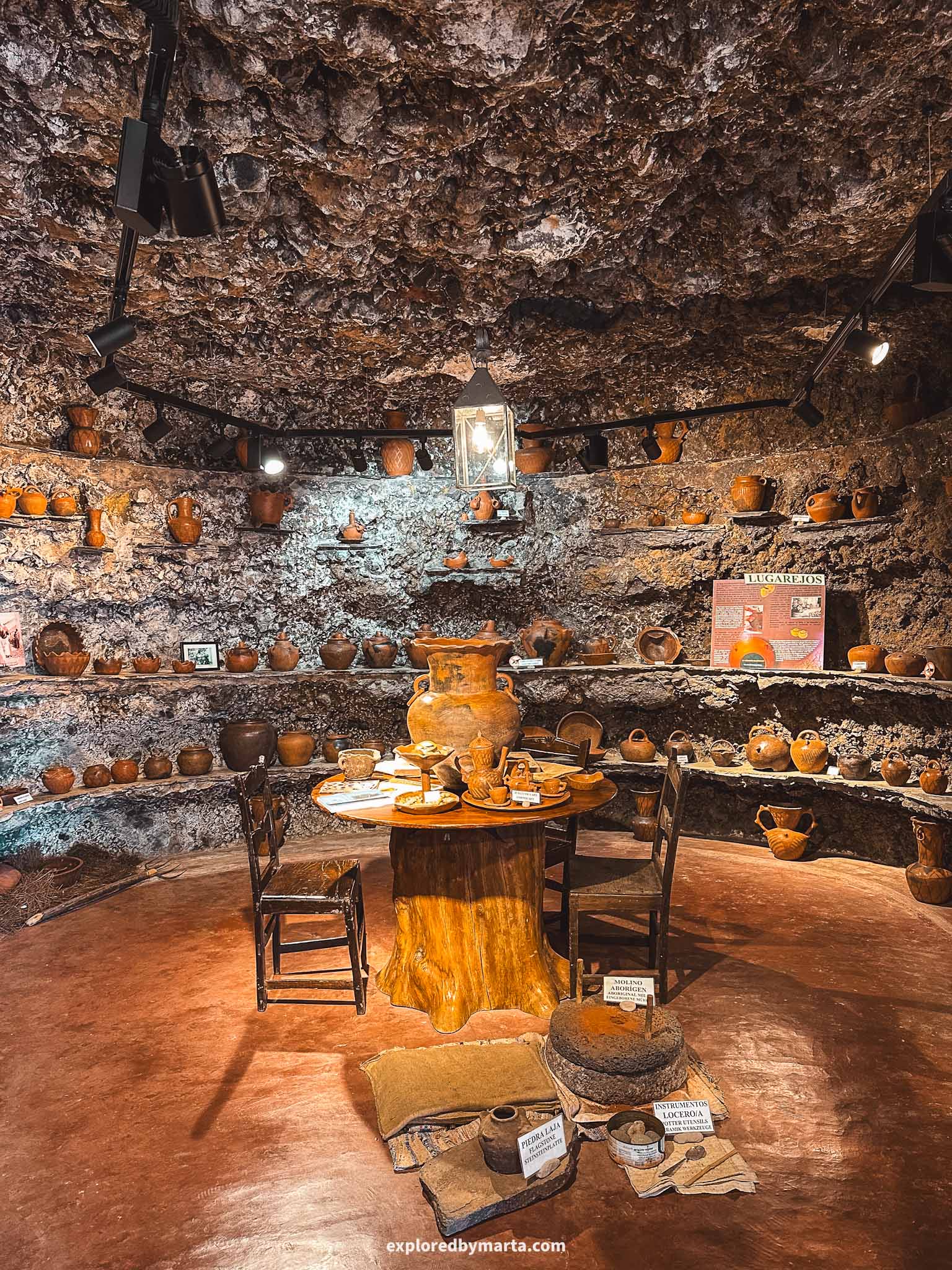
This wonderful ethnographic museum of cave houses in Artenara, the highest village on the island, was one of my favorite hidden gems in Gran Canaria. When we visited, entry was free, but we left a donation at the entrance.
This open-air museum consists of several caves, each serving a different purpose—the kitchen cave, the bedroom cave, the workshop cave, and more. Together, they form a complete home for an entire family.
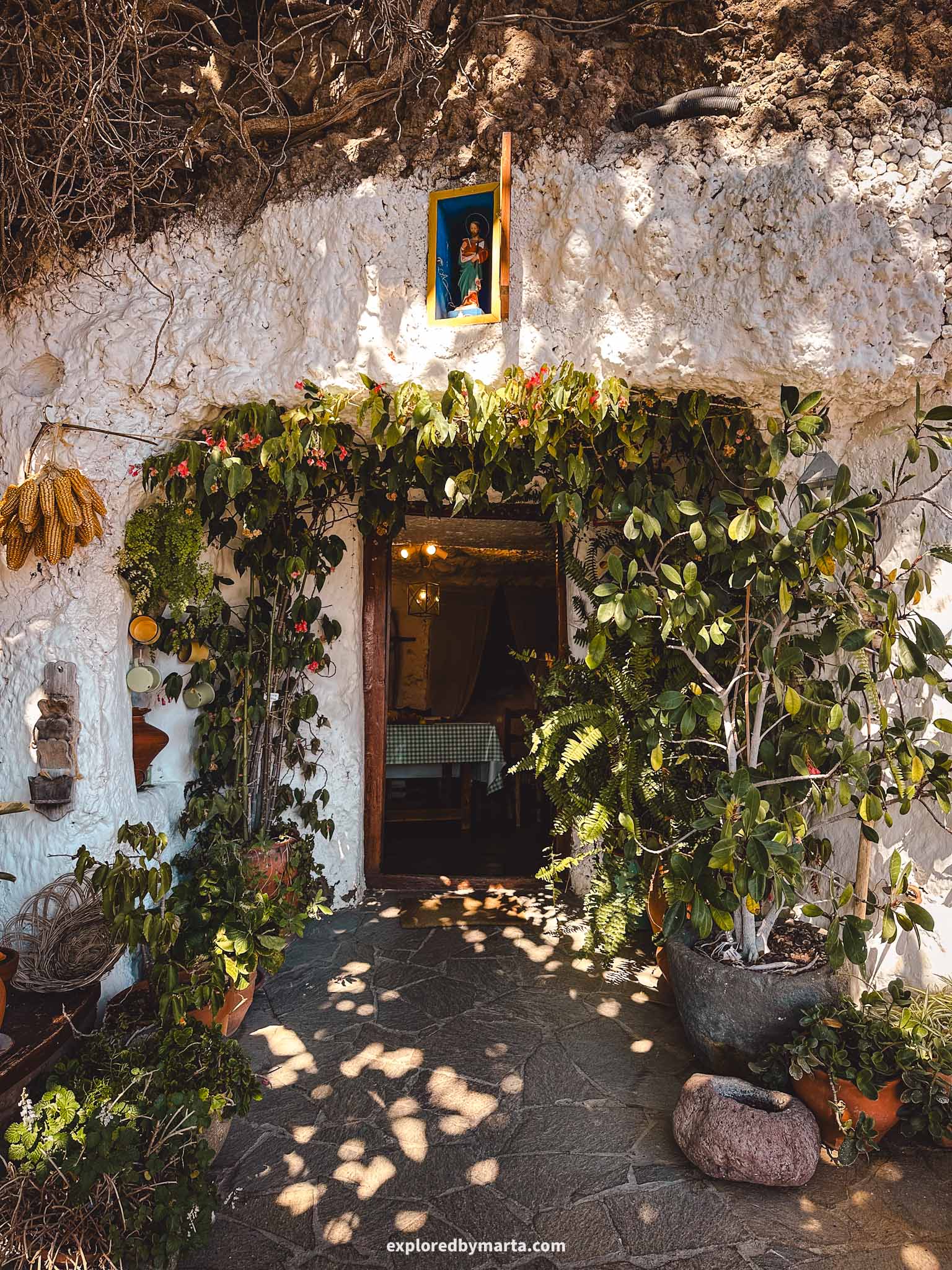
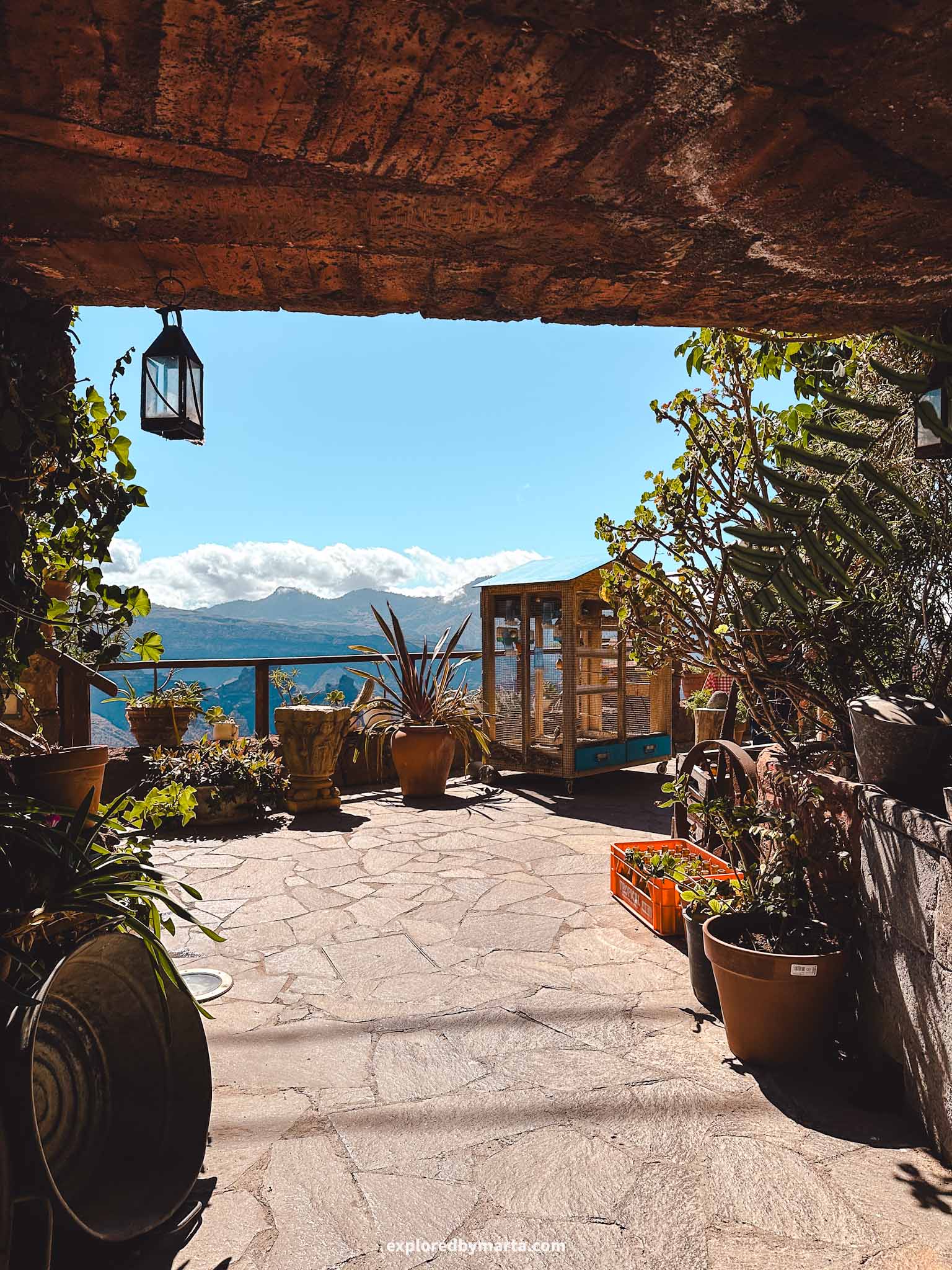
The Artenara cave houses showcase how early settlers adapted to life on this volcanic island. Living in caves was both practical and affordable, as the rock naturally provided walls, a ceiling, and a floor—the only thing missing was a door!
I didn’t expect to like this place so much! The rooms are beautifully furnished with period-accurate furniture, decorations, and tools. Of course, it’s only a replica, but exploring all the little cave rooms was incredibly interesting and fun!
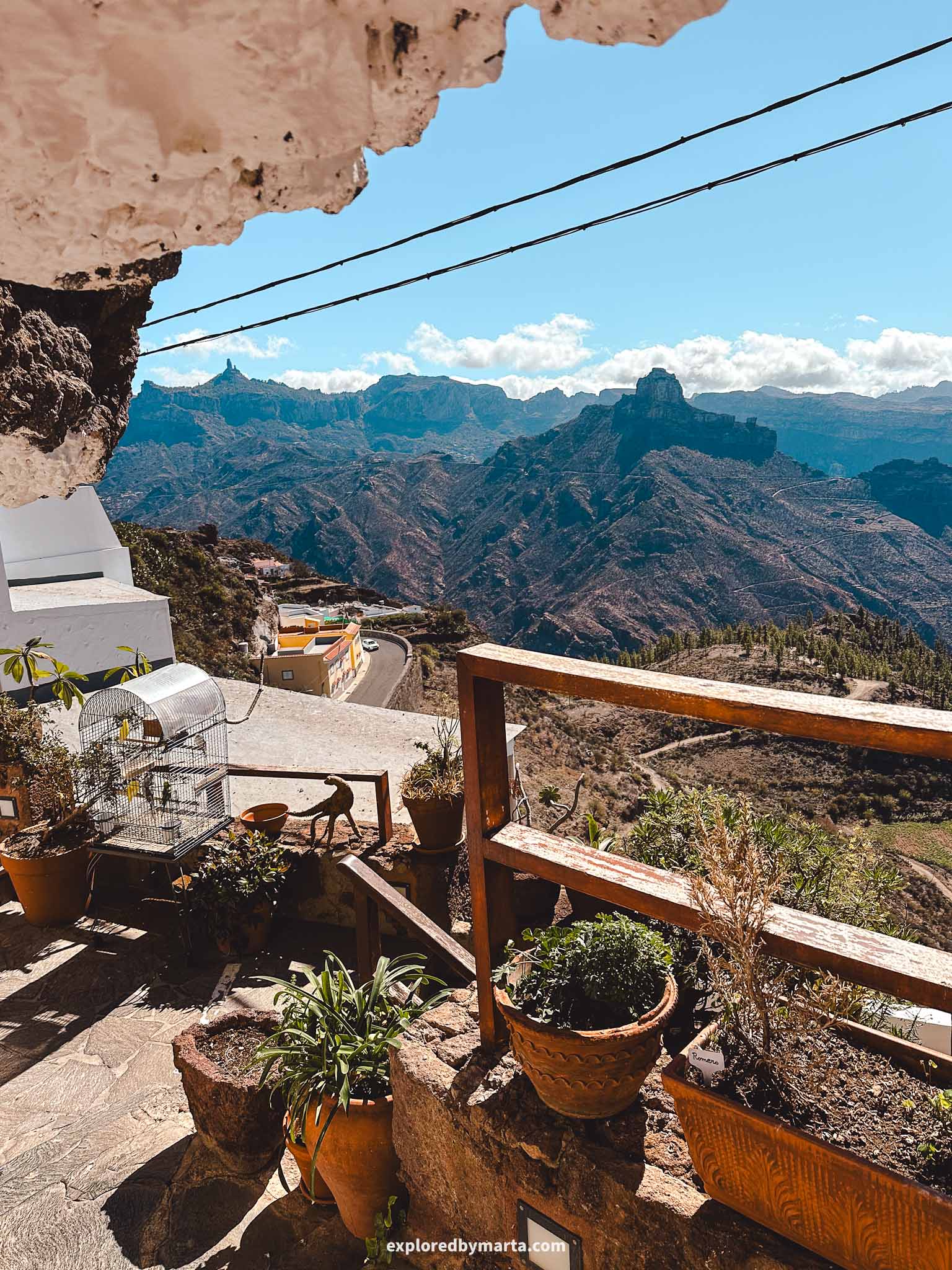
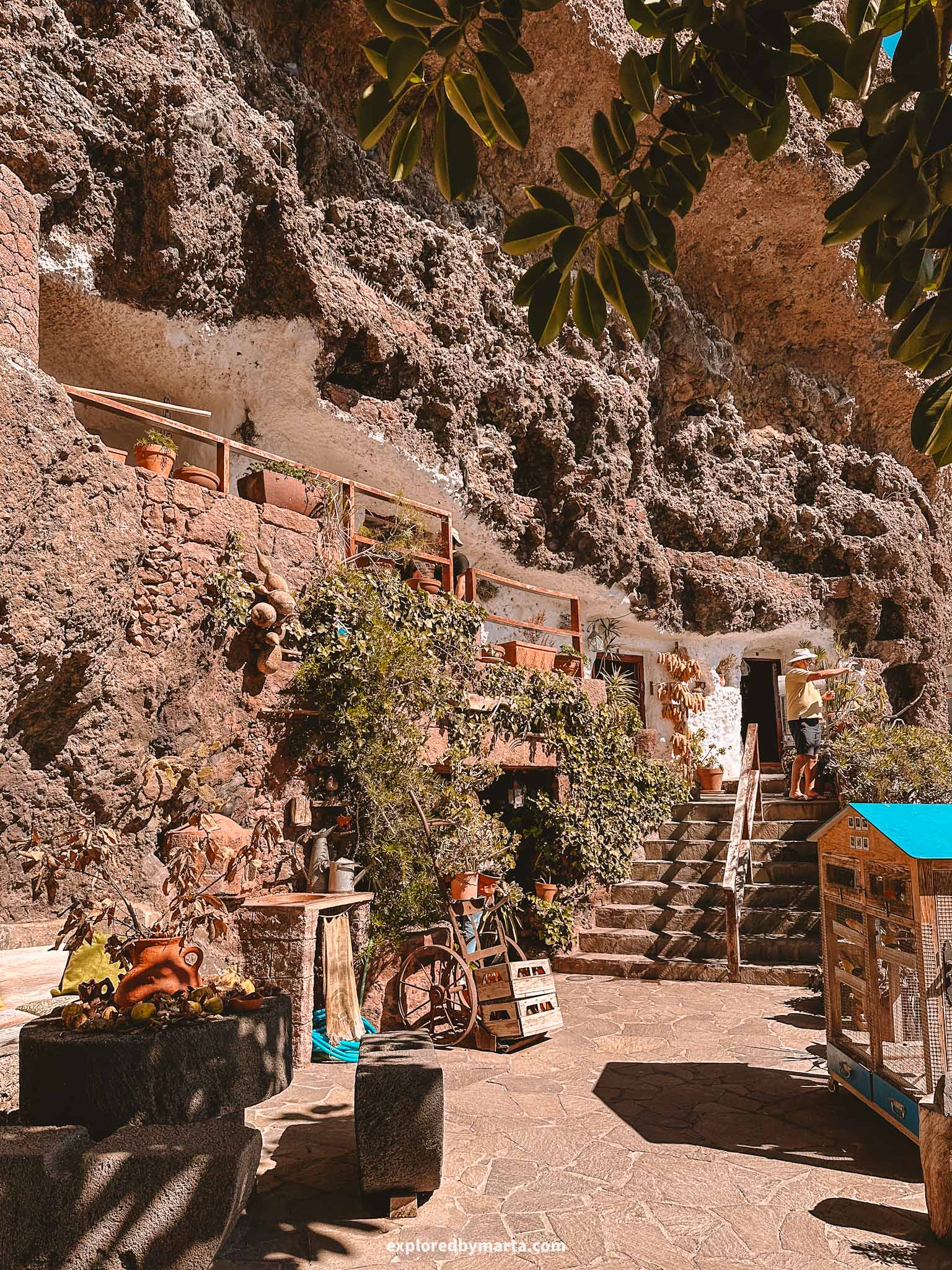
My favorite part was probably the patio of the cave house. It featured a flower garden, an oven, a small pond for turtles, a fireplace, and the most breathtaking views of the mountains in Gran Canaria—exactly what you’d expect from the highest village on the island!
If you have a little free time, I can’t recommend this place enough. Hopefully, you’ll visit on a sunny day when the skies are clear, so you can fully enjoy the panoramic mountain views. That’s a 10/10 from me!
Location: Museo Etnográfico Casas Cueva de Artenara
5. Cuevas del Rey


Cuevas del Rey, or the King’s Caves, are hidden gems nestled in the mountains of Gran Canaria, near the striking Roque Bentayga rock formation in the Tejeda municipality. These are among my favorite caves in Gran Canaria!
This ancient cave complex, carved into a massive rock, towers above the small mountain village of El Roque. You can reach the caves by following a narrow, steep path from the village, over a village house, and up toward the rock. The hike is short but steep—so be careful!
Many caves are accessible from the path, though some seemed a bit too risky to explore. I especially loved the caves with views of the El Roque village and the towering rock on the opposite side of the village! We made some cool photos here!
It’s so cool that the Guanches once chose this as a place to live, and centuries later, a modern-day village stands in nearly the same spot. Honestly, I get why—the mountain views from here are absolutely incredible!
Location: Cuevas del Rey
6. Cuevas de Acusa Seca
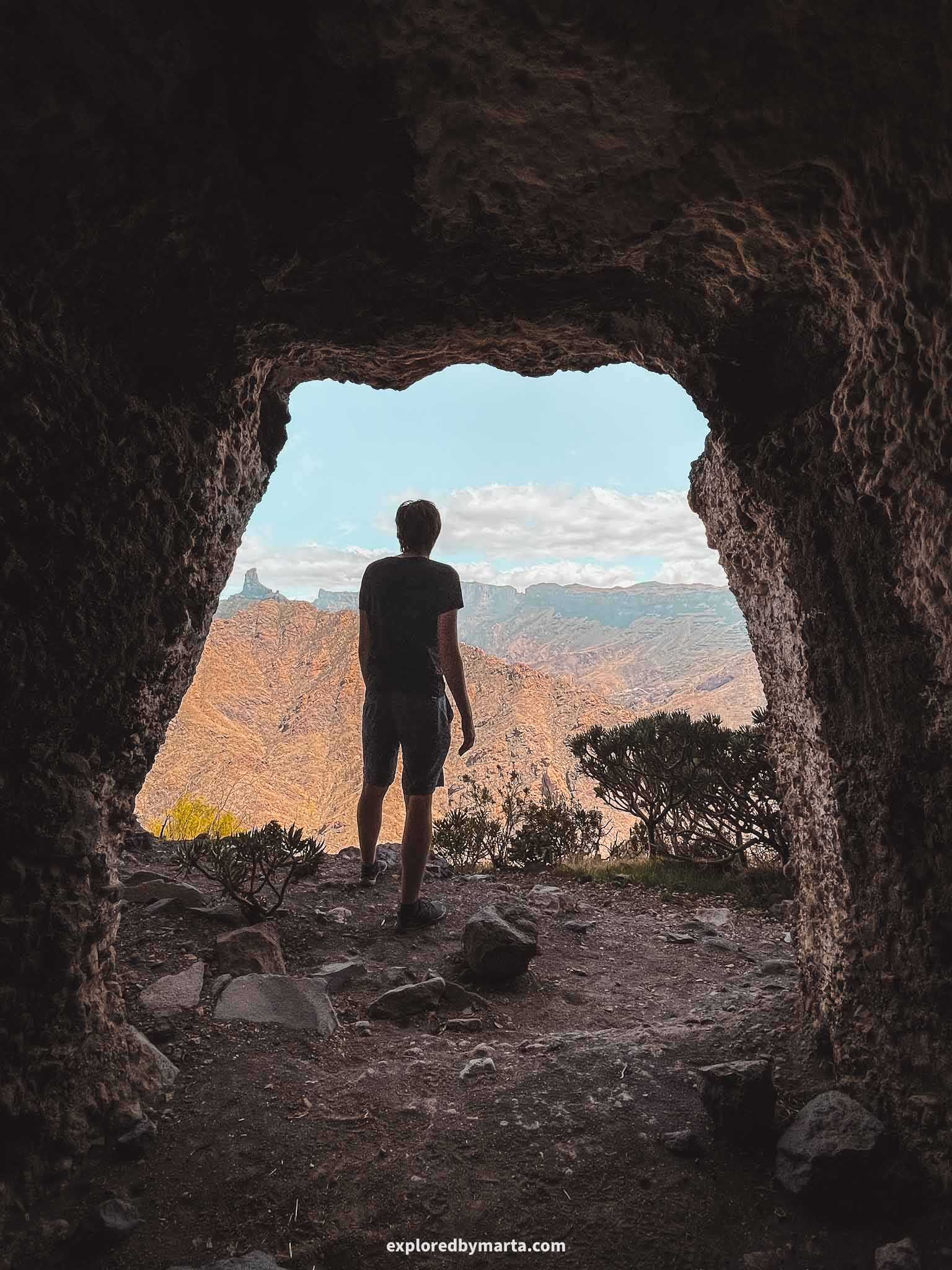
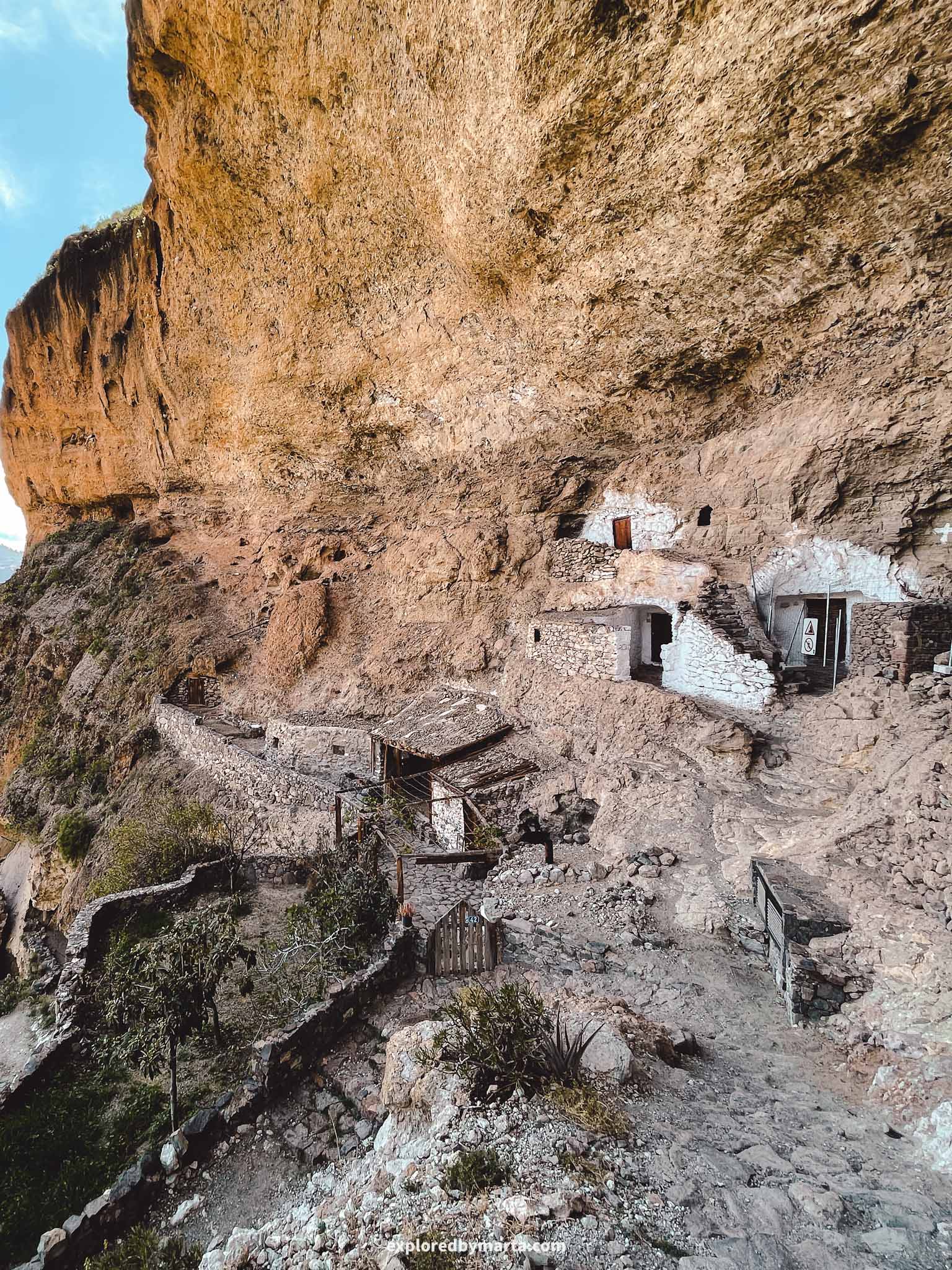
Acusa Seca is a small village of cave dwellings in the mountains of Gran Canaria. It features dozens of caves, once used by the Guanches, carved into the cliffside of the Acusa Valley.
The caves offer spectacular views of the surrounding mountains, including Gran Canaria’s most prominent rock formations: Roque Nublo and Roque Bentayga.
It’s a quiet and secluded spot, accessible only via narrow, winding roads (we parked at a road bend before the village). However, some of the cave houses have been converted into rental units, which means you can book a stay at one of the cave homes!
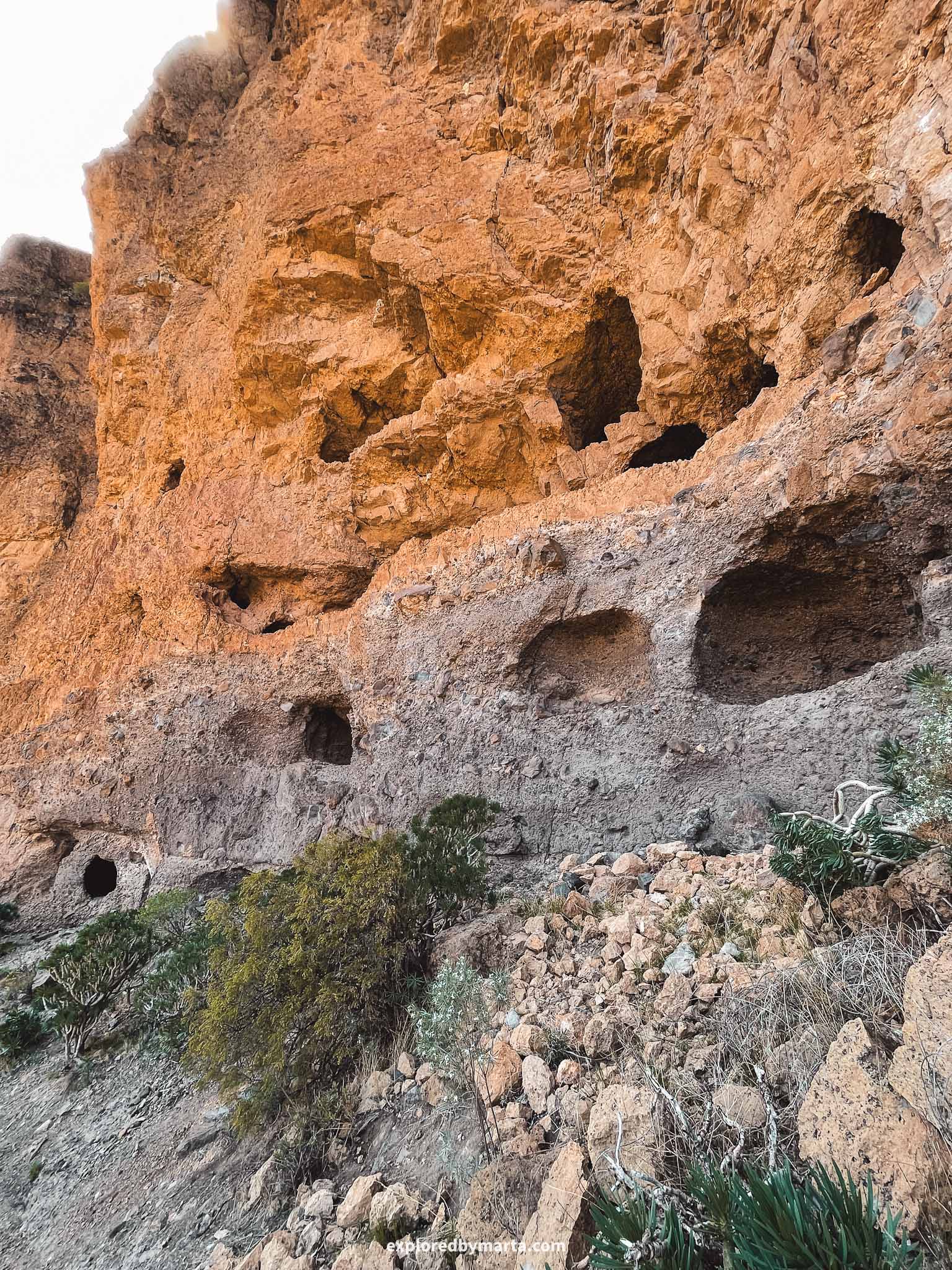
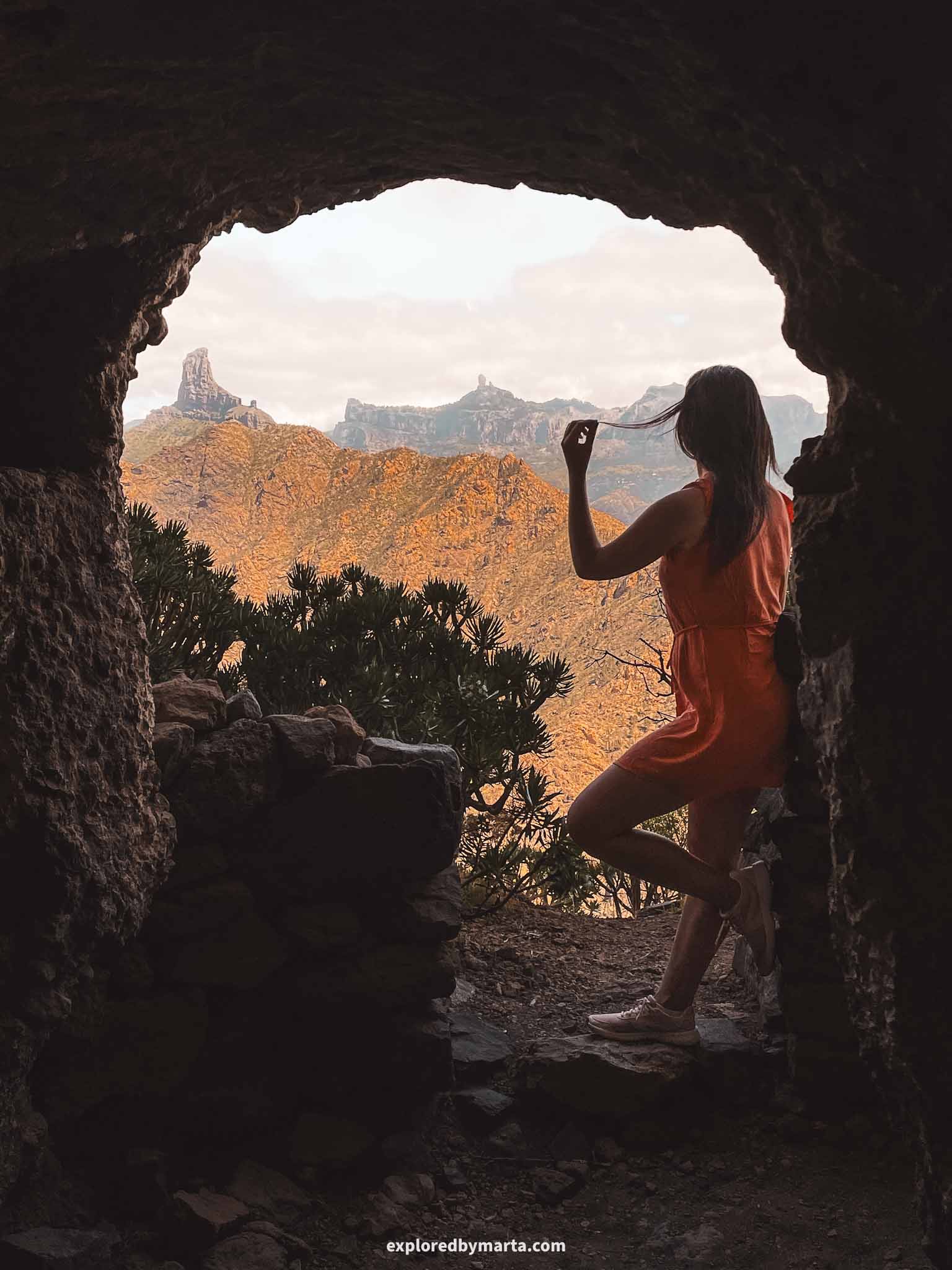
There is a marked trail that passes by the village houses and continues along the cliffside, where you can explore some of the abandoned caves and peek inside. Nothing extraordinary, but we really enjoyed the remoteness and tranquility of this place.
Some of the caves are carved high up into the mountain, and I couldn’t help but wonder how the Guanches managed to access them. Luckily, some caves were right next to the path, so we could walk inside and explore. It’s a unique place for sure!
Location: Acusa Seca Cave Village
7. Cave restaurants in Guayadeque Ravine
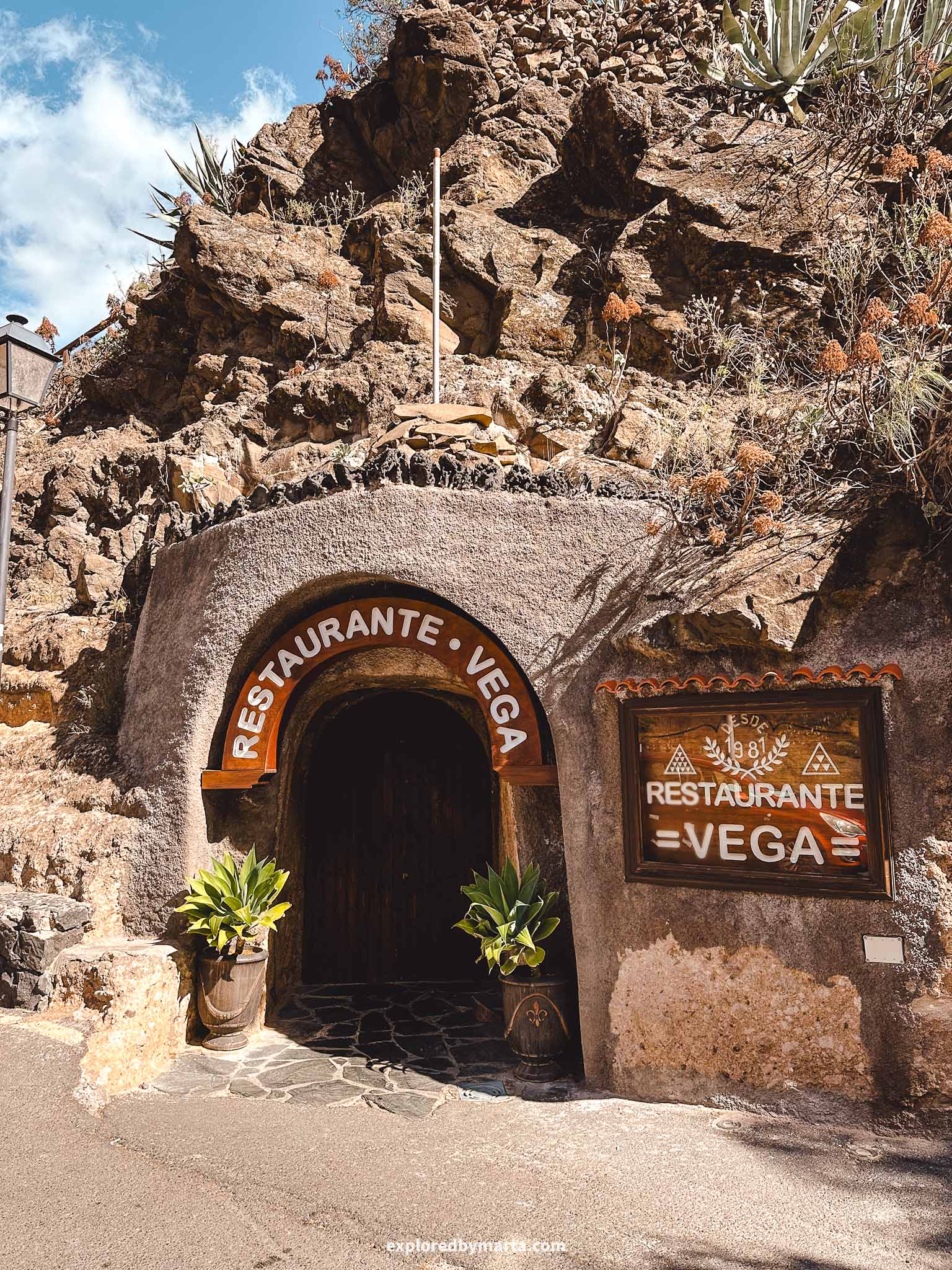
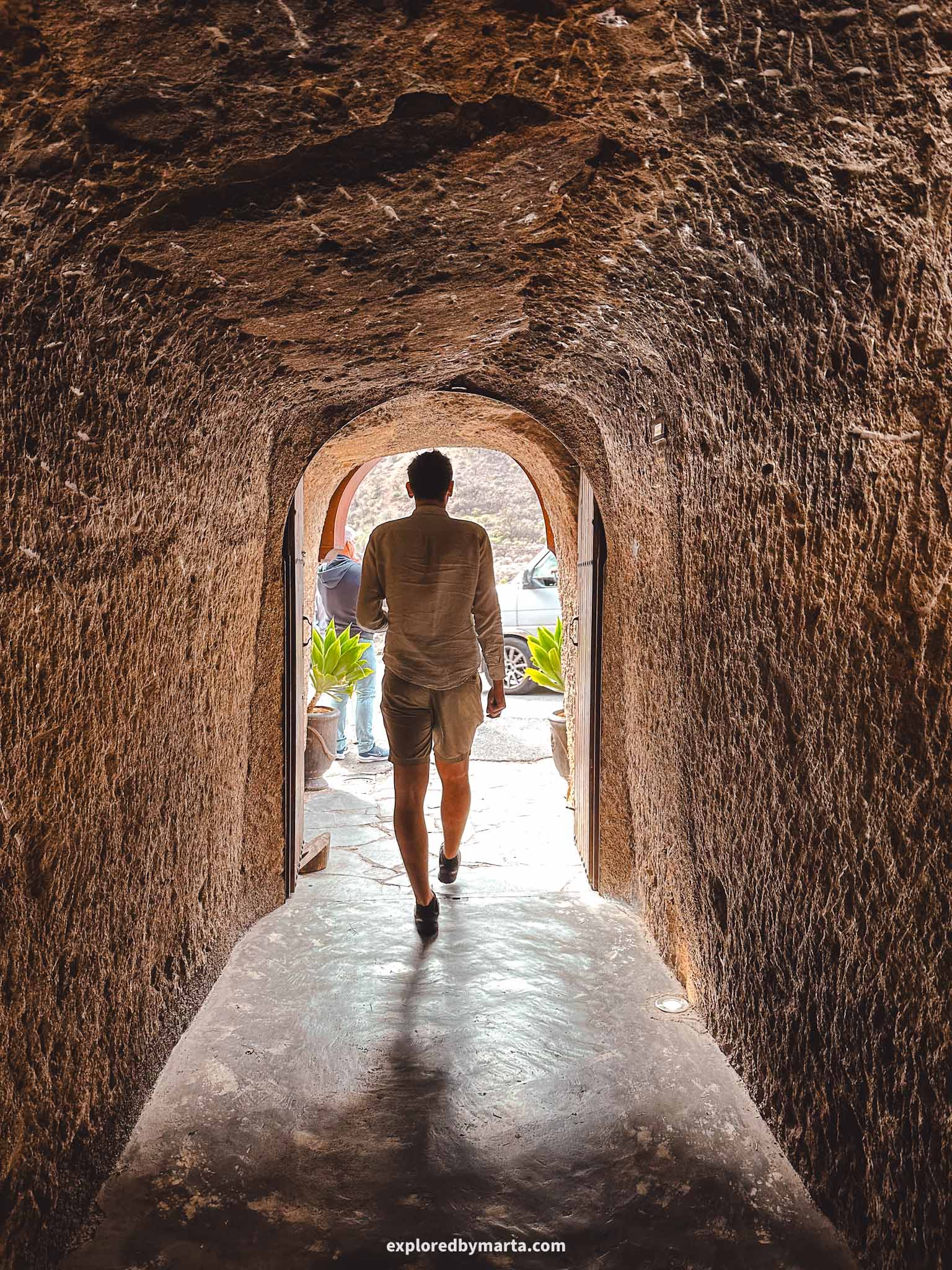
Guayadeque Ravine is one of the largest and most beautiful valleys in Gran Canaria. And guess what? The valley was inhabited by the Guanches, Gran Canaria’s indigenous people, for centuries before the Spanish arrived.
The cave houses have remained there until today. There’s an archaeological museum in the valley where you can learn about the lives of its past inhabitants. Or you can simply drive inside the valley and explore the caves yourself.
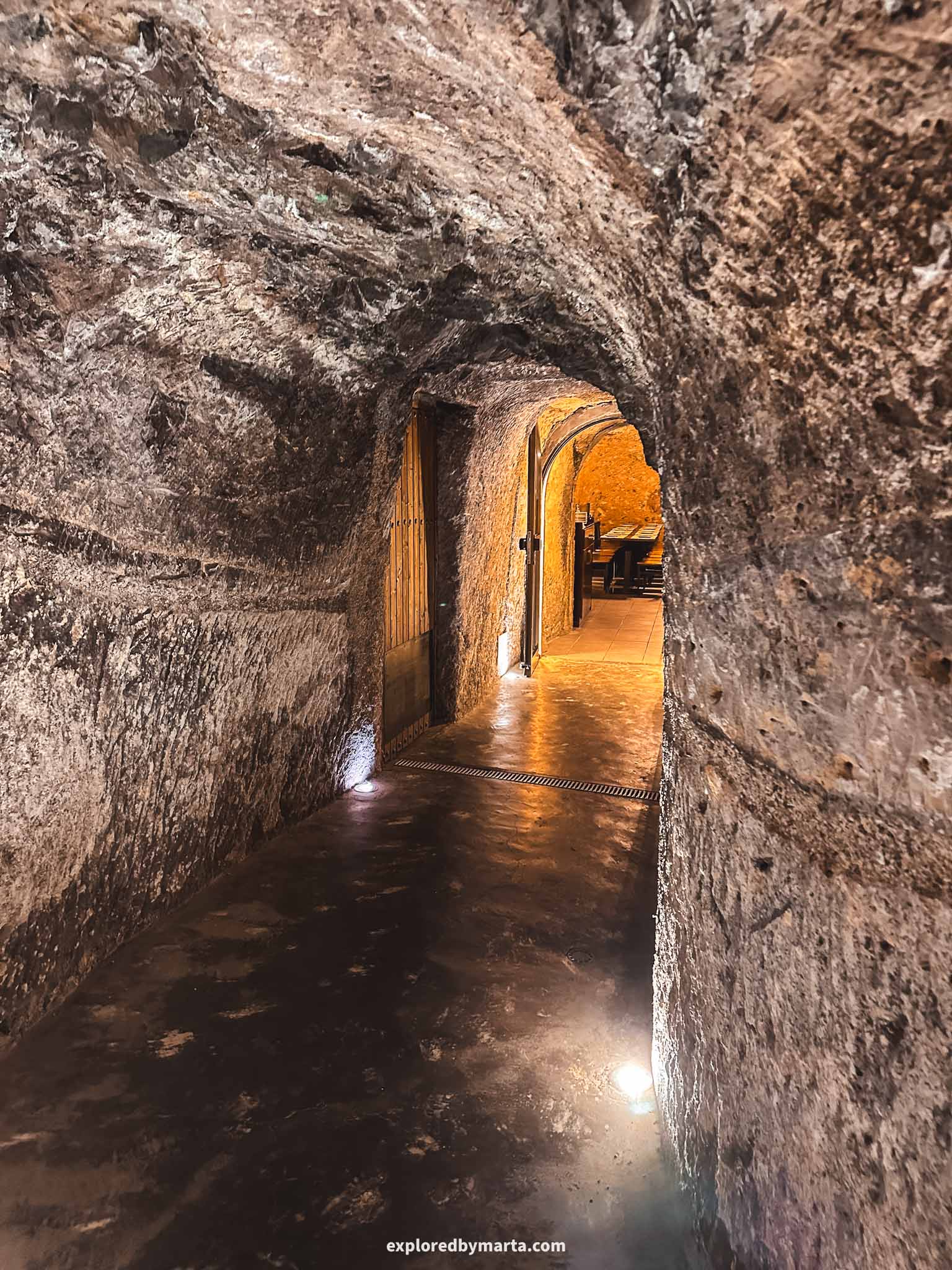

Some of the cave houses have been transformed into modern homes with electricity and running water (you can’t visit them), but others now serve as rental properties, shops, churches, and restaurants.
If you aren’t interested in any of the caves in Gran Canaria, these cave restaurants should make you change your mind. Trust me, dining in a cave restaurant is one of the bucket list things to do in Gran Canaria!

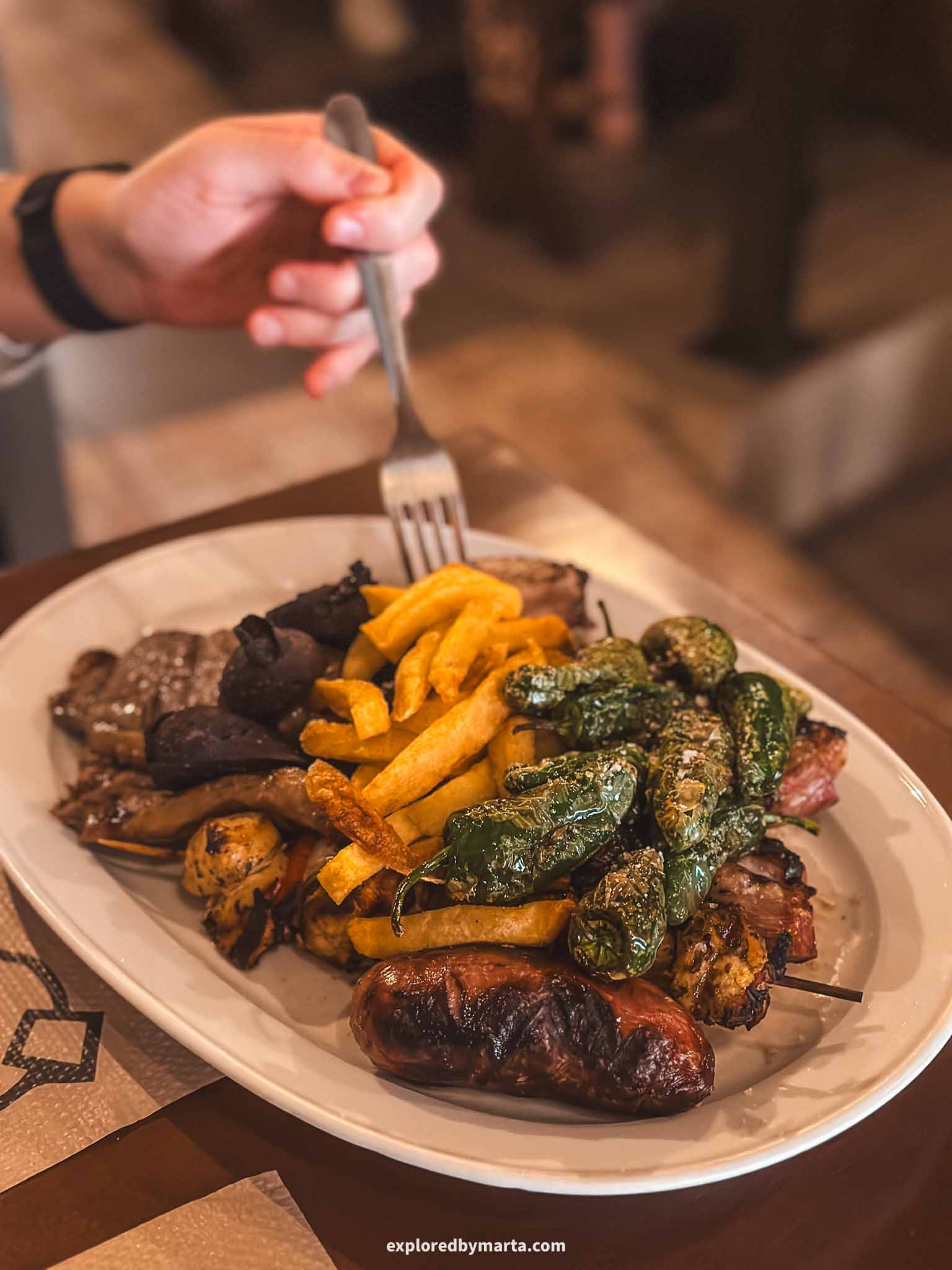
We came to this valley for exactly this reason! There are a couple of bars and cave restaurants in the valley, but the most famous ones are Restaurante Tagoror and Restaurante Vega. I recommend choosing one of these two cave restaurants.
We chose Restaurante Vega, and it was a delight! They serve local cuisine and specialize in grilled meats, so you can enjoy everything from Canarian dishes to Spanish tapas and hearty grilled meat platters. Portions were big so we had to pack up the leftovers to take home.
Location: Restaurante Vega
8. La Fortaleza de Ansite


La Fortaleza de Ansite (Ansite Fortress) is a historically significant site in Gran Canaria. It consists of a group of large rock formations filled with caves that served as the last stronghold of the Guanches during their battle against the Spanish conquistadors in the 15th century.
After this fortress fell, the Guanches lost control of the island, and Gran Canaria became a territory of the Spanish Crown, marking the end of years of fierce battles between the two sides.


We stumbled upon this place by accident, and surprisingly, not many travel blogs mention it. Among all the caves in Gran Canaria, this cave settlement is probably the most historically significant.
What’s even cooler is that you can visit this place for free. There’s also a museum dedicated to the site in the nearby village, but we skipped it and drove straight here. This place is open all day long—you can come and explore anytime!
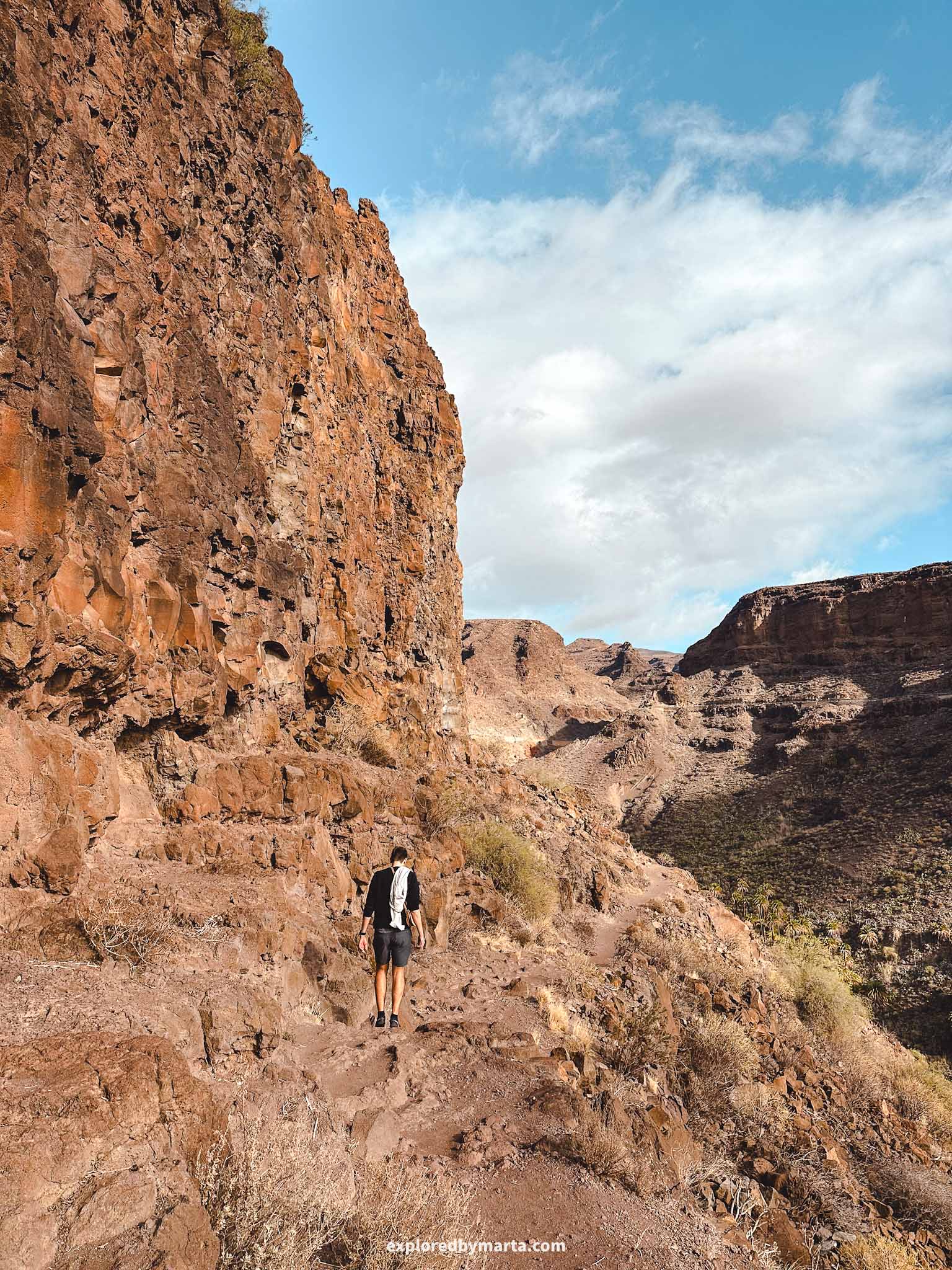

There are numerous smaller caves that the Guanches once used as homes, storage spaces, and even burial sites. We also found a large cave that tunnels through the entire mountain—quite an impressive spot with stunning views!
If you’re in the area, I highly recommend stopping by for a quick 30-minute visit. This is one of those hidden gems in Gran Canaria that usually doesn’t attract too many crowds. There is a large parking lot right next to the rocks and a walking path that follows around them.
Location: La Fortaleza de Ansite
9. Cueva de Taurito / Cueva de Lucas

If you’re staying in one of the resort towns in the south of Gran Canaria, you won’t have to travel far to find a cave. There’s a small but beautiful sea cave right in the Taurito seaside town.
Cueva de Taurito is a volcanic sea cave located at the southeastern end of Taurito Beach (on the left side if you’re coming from town). The best time to visit is at low tide, as the cave can get submerged at high tide.
The cave is especially beautiful at sunset when the sky and ocean glow with golden hues. If you catch the perfect moment, you’ll be rewarded with some truly breathtaking photos.
Location: Cueva de Lucas
10. Cuevas de Caballero
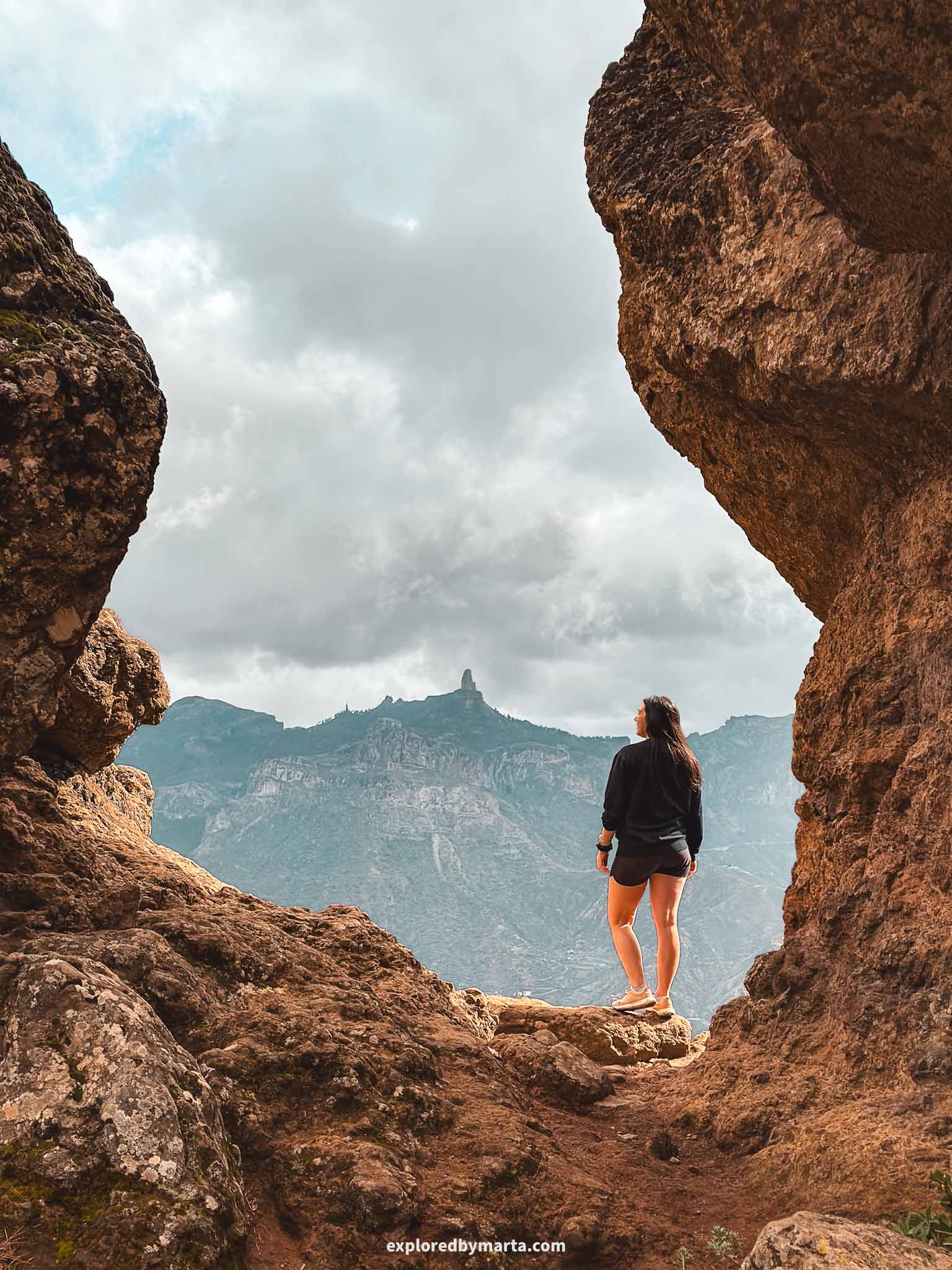
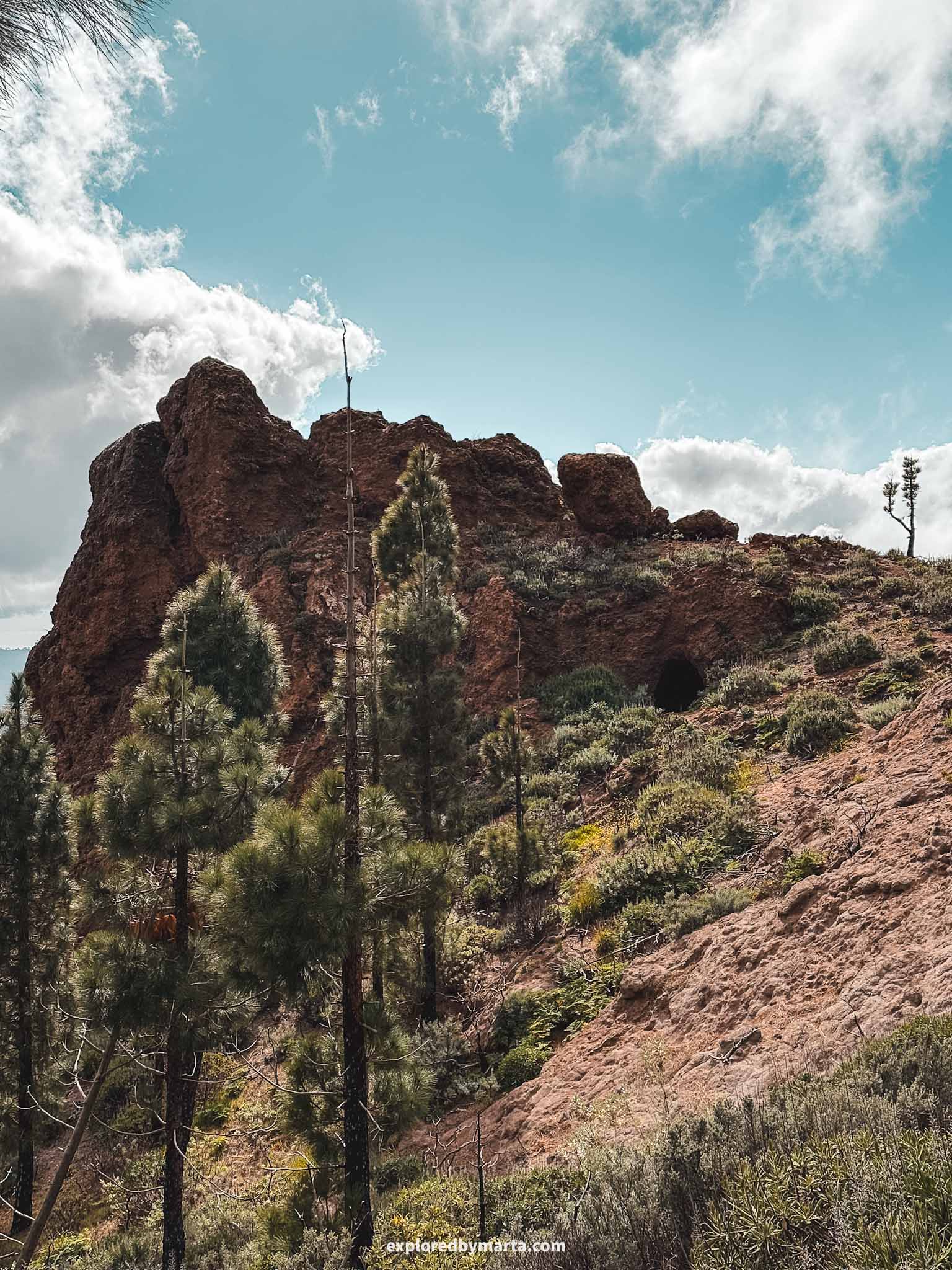
Okay, hear me out! Don’t visit Cuevas de Caballero just for the caves—go for the views! The Guanche family who lived here centuries ago probably had the most epic ‘window’ views on the entire island, haha!
These caves are a bit of an off-the-beaten-path spot in Gran Canaria and are not accessible by car. We stumbled upon them while hiking the Cruz de Tejeda–Artenara trail—one of my favorite hikes in Gran Canaria!
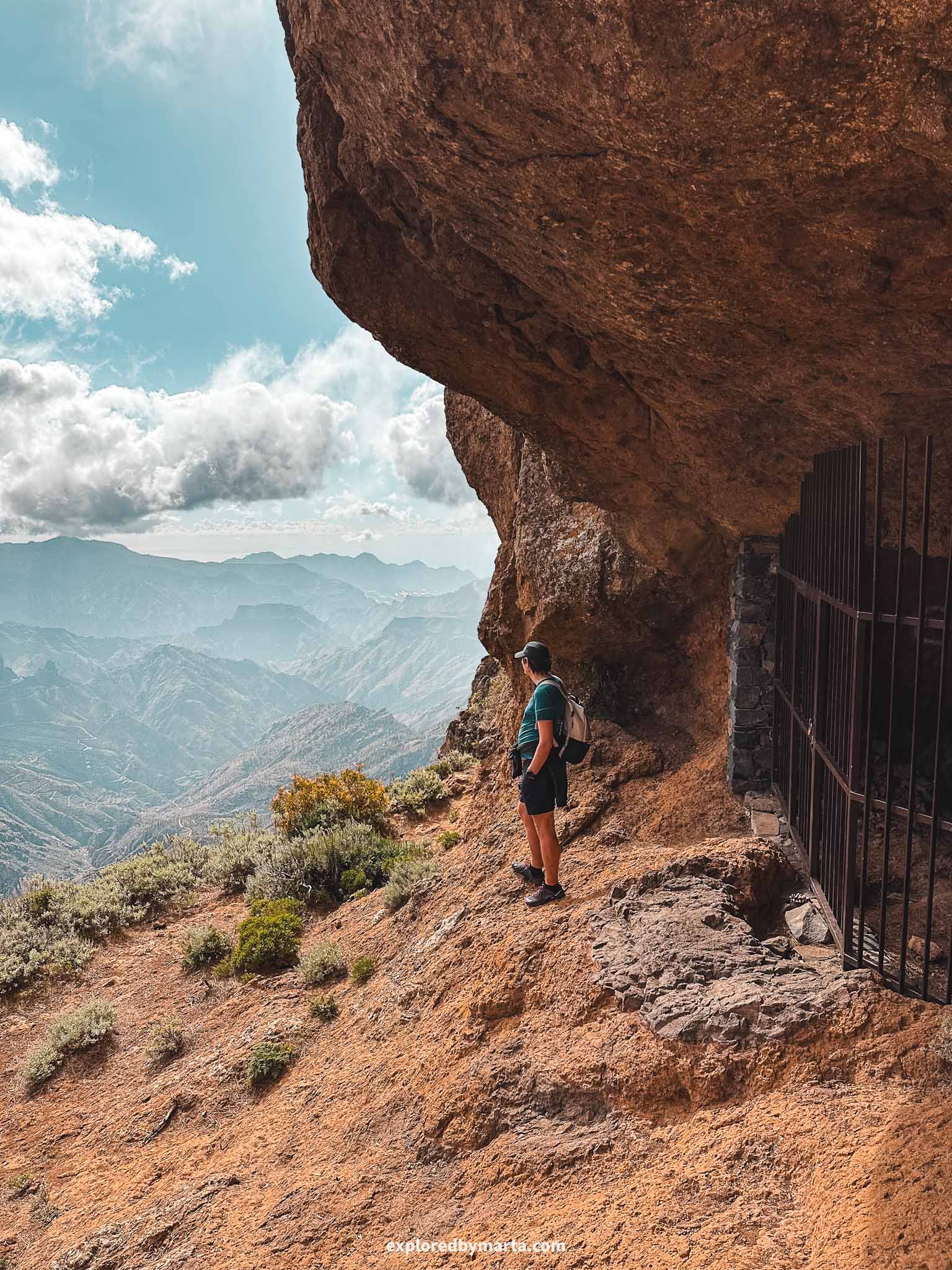
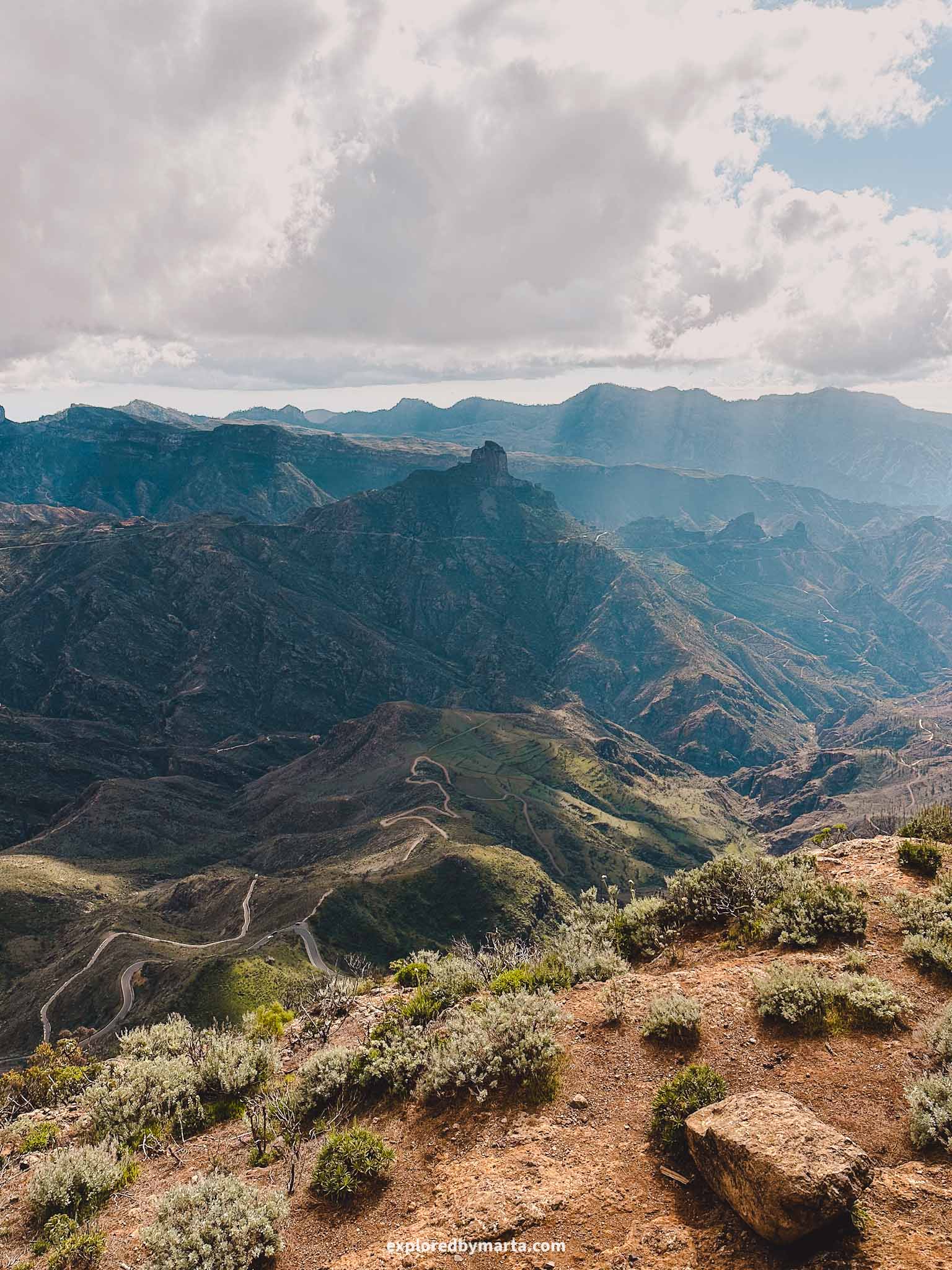
The cave settlement consists of a few caves facing the stunning mountains of Gran Canaria. You’ll need to find a small path leading from the main trail to the cliffside, which takes you to the ‘front porch’ of these ancient Guanche caves.
Some caves are too small to enter, but there’s a larger one that’s fenced off—though you can still peek inside through the fence. However, as I said, the real highlight here isn’t the caves themselves—it’s the breathtaking views.
I hope you get there on a sunny day to enjoy some of the best views in Gran Canaria!
Location: Cuevas de Caballero
Happy exploring!
Gran Canaria, the third-largest of Spain’s Canary Islands, is often called a ‘miniature continent’ thanks to its diverse landscapes—everything from golden sand dunes and volcanic cliffs to lush forests and dramatic mountains. Gran Canaria has it all!
We’ve visited this unforgettable Atlantic island numerous times, often staying for months at a time, yet there’s still so much more to explore! And I’m not just talking about the caves in Gran Canaria!
What I love most about Gran Canaria is that it offers exactly what your heart desires—whether it’s relaxing on sandy beaches, hiking epic mountain trails, exploring charming historic villages, or embarking on thrilling road trips along the rugged coastline.
I hope you enjoy this island as much as we did!
PIN FOR LATER!
